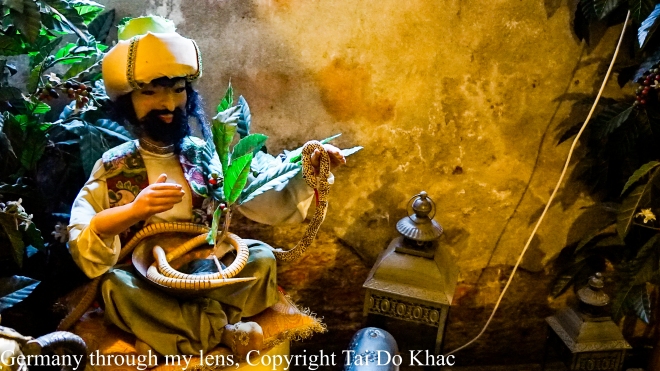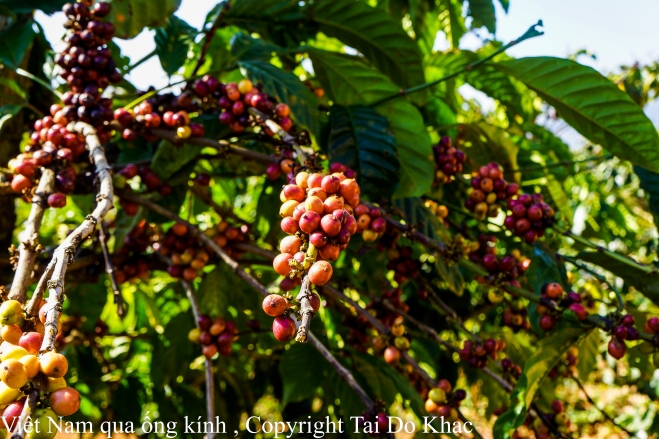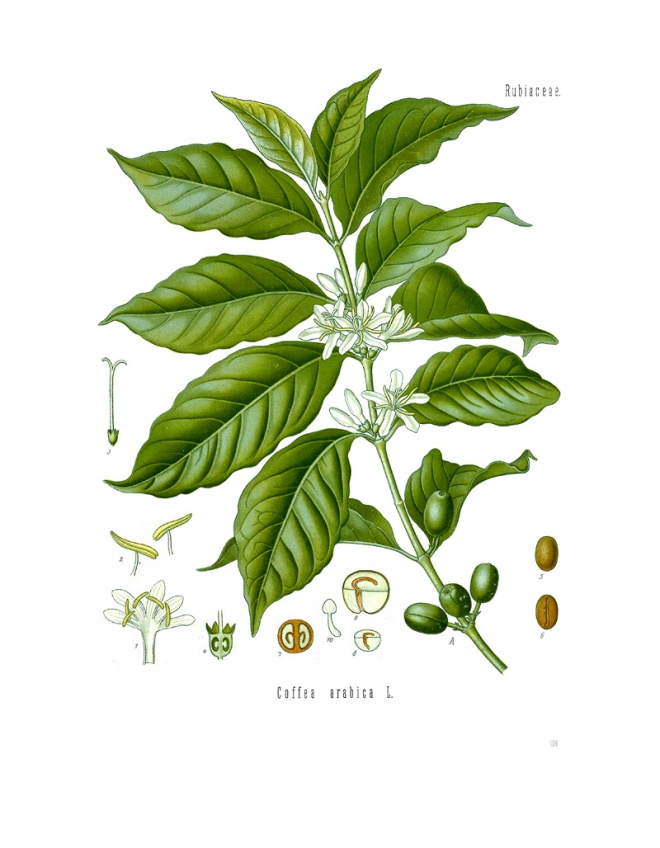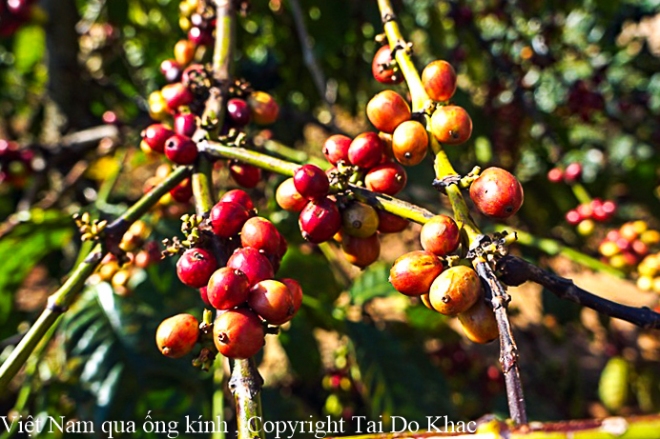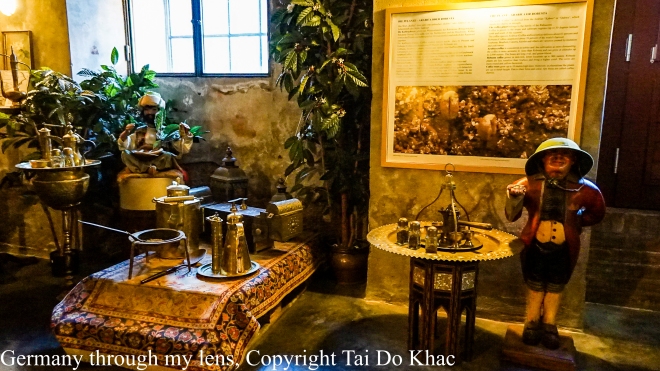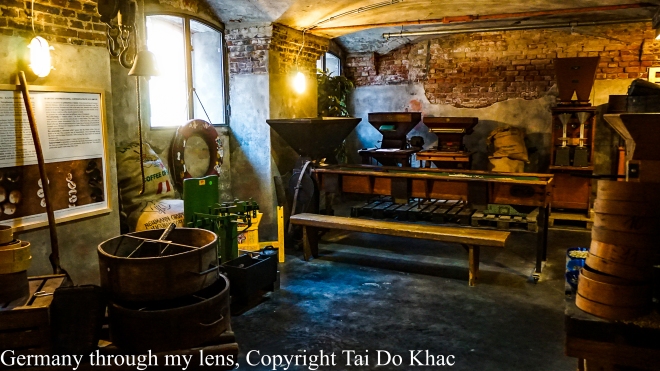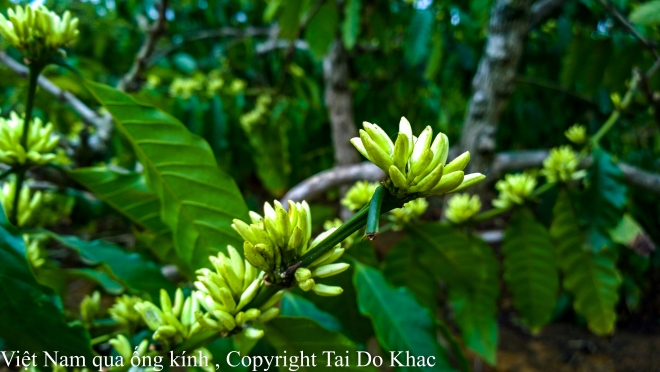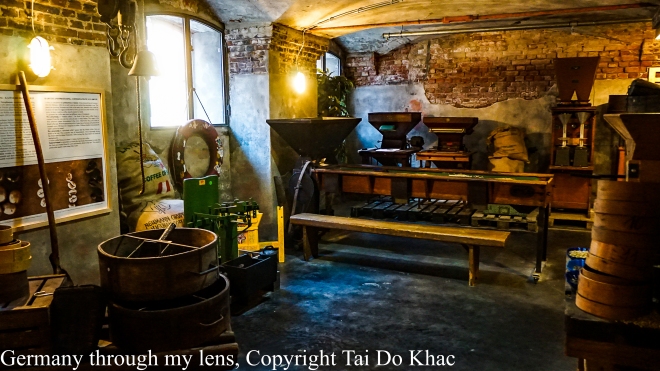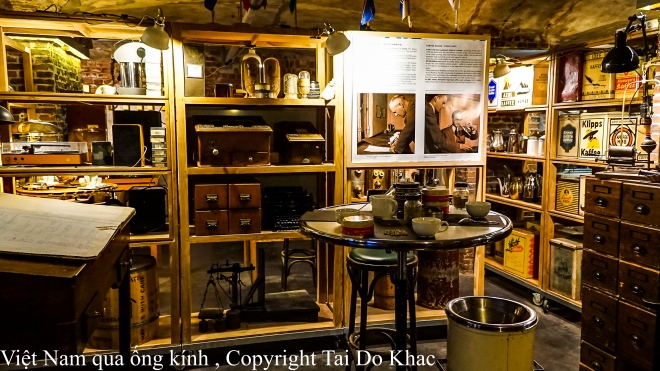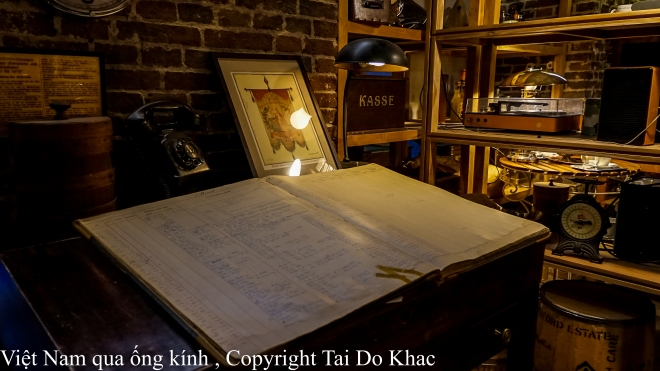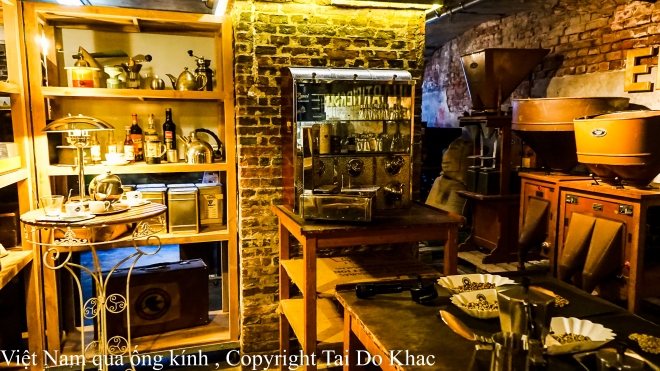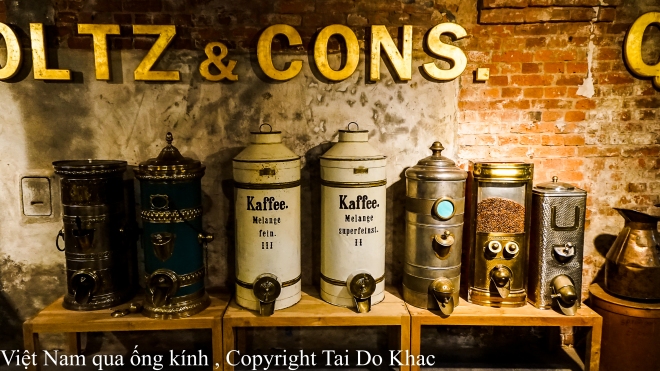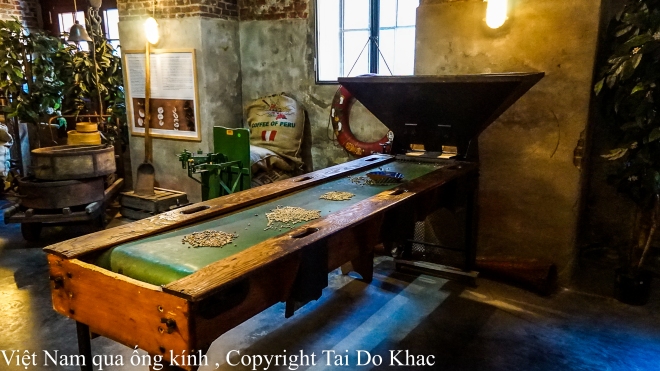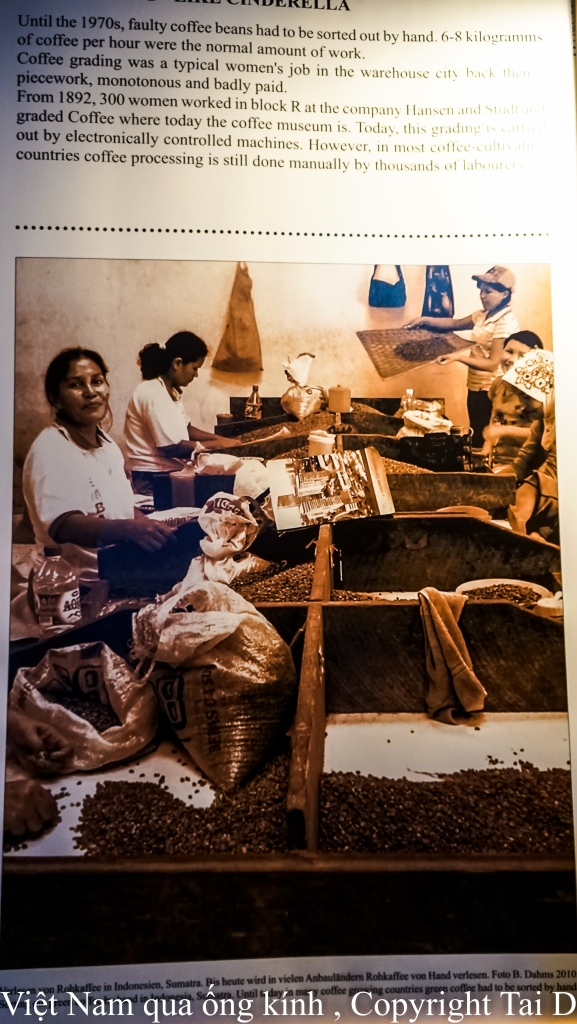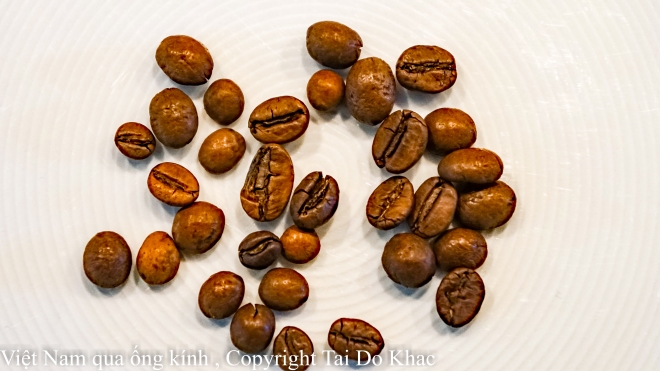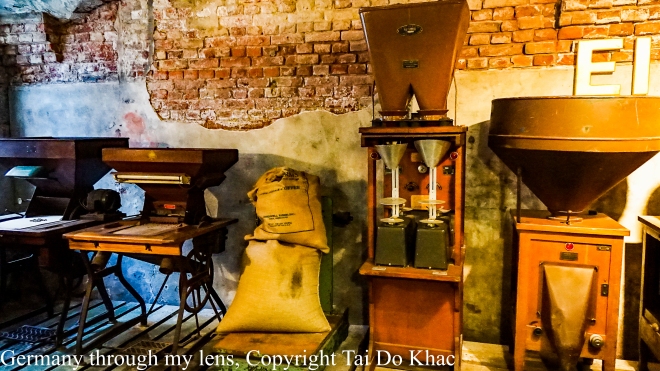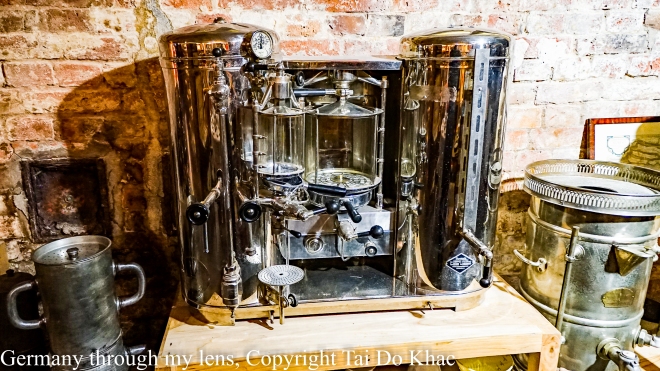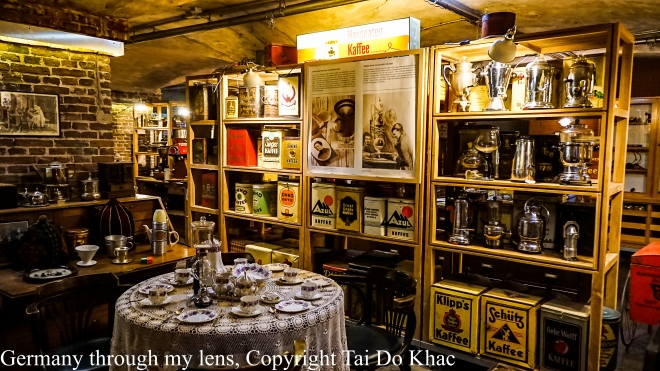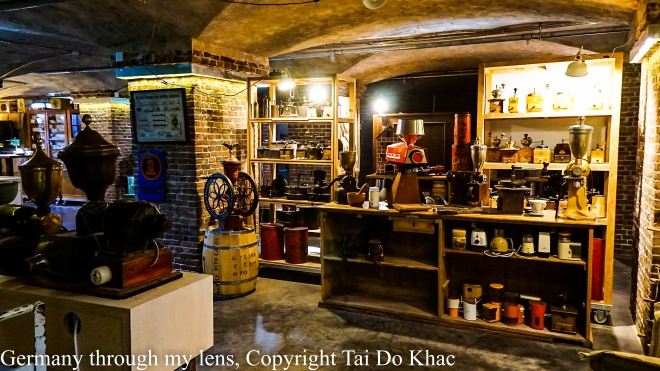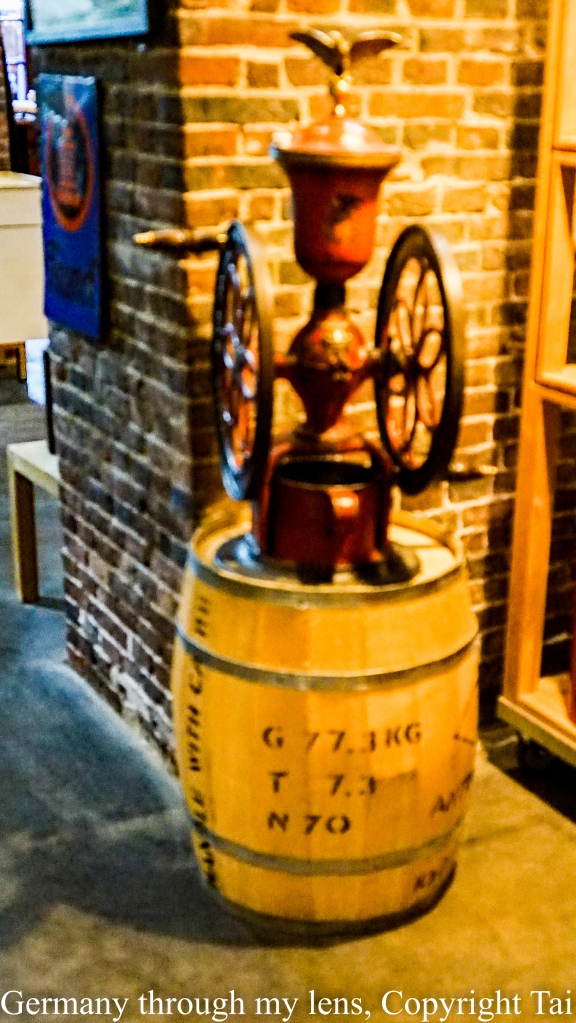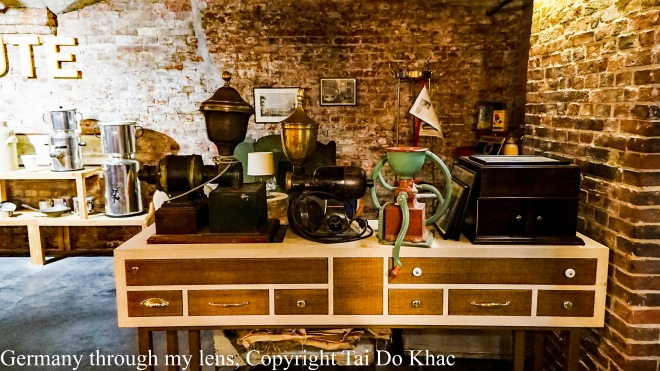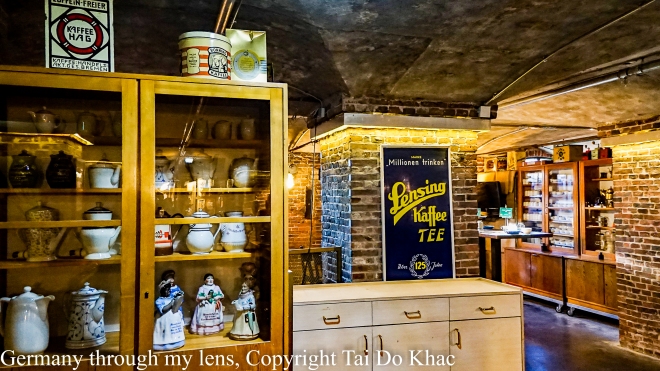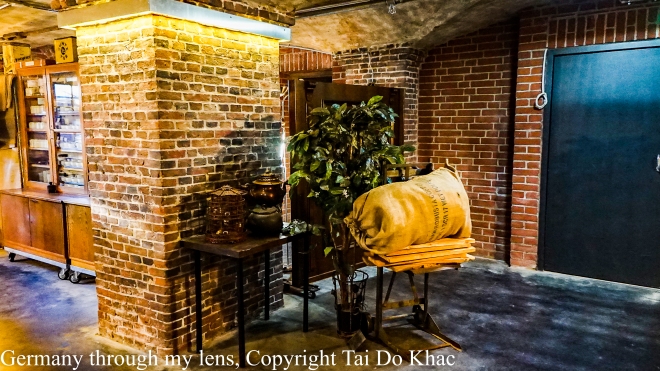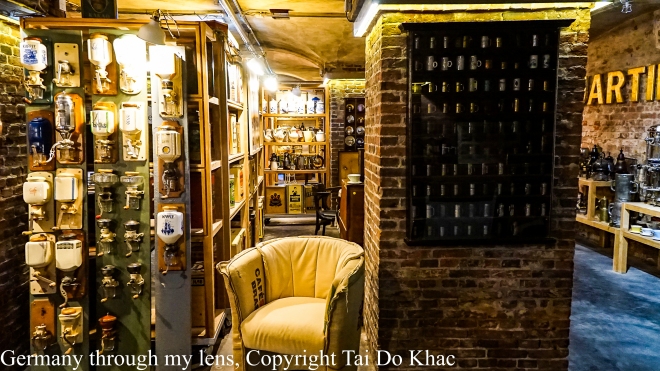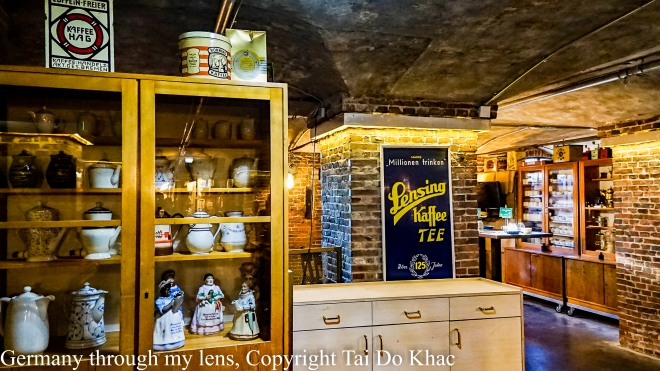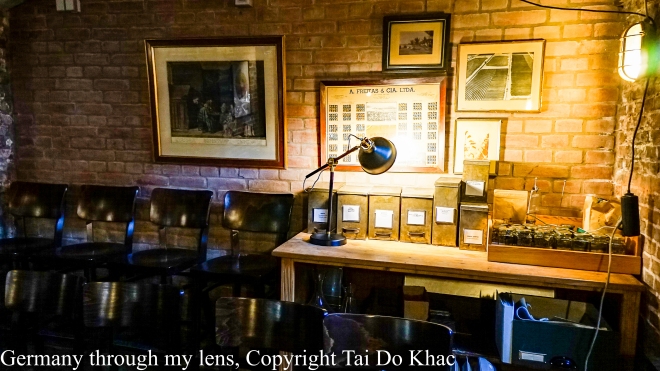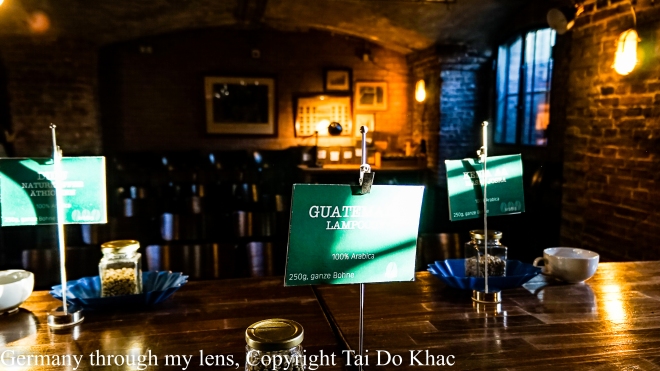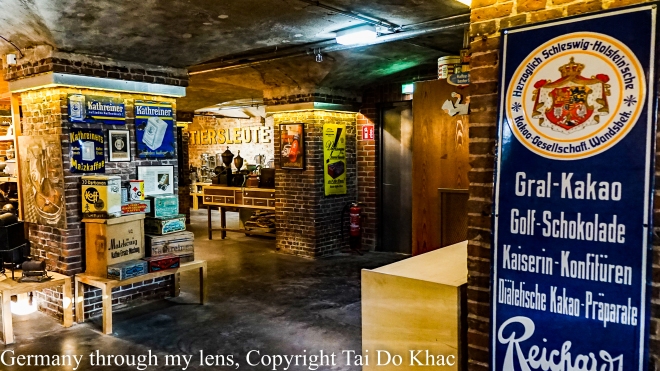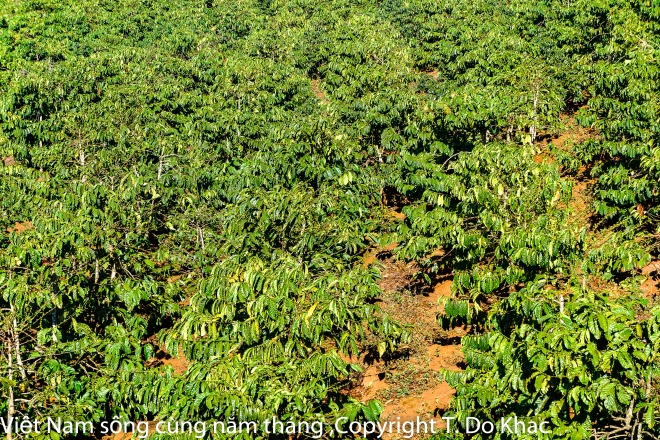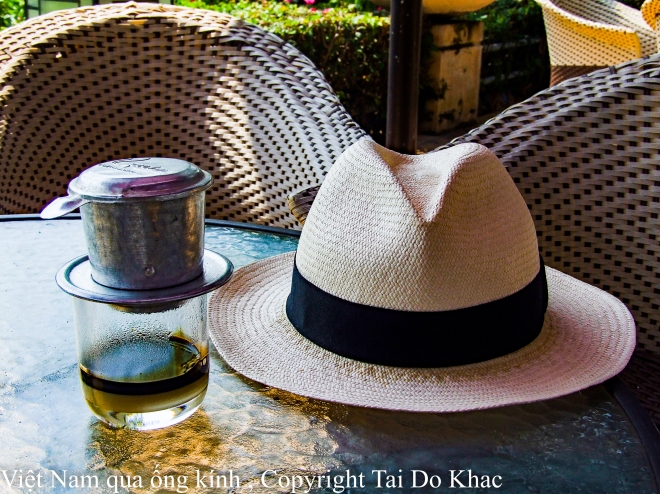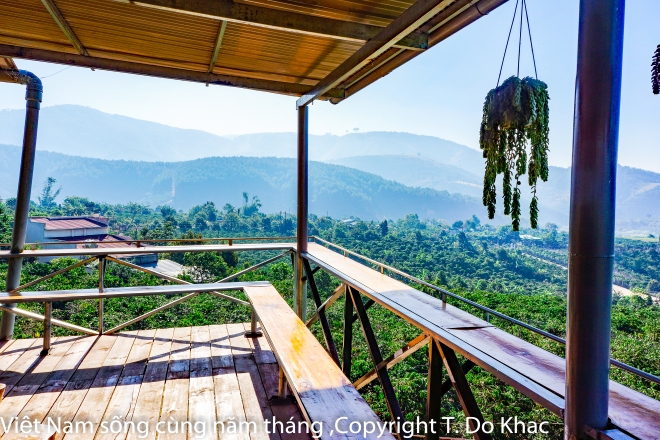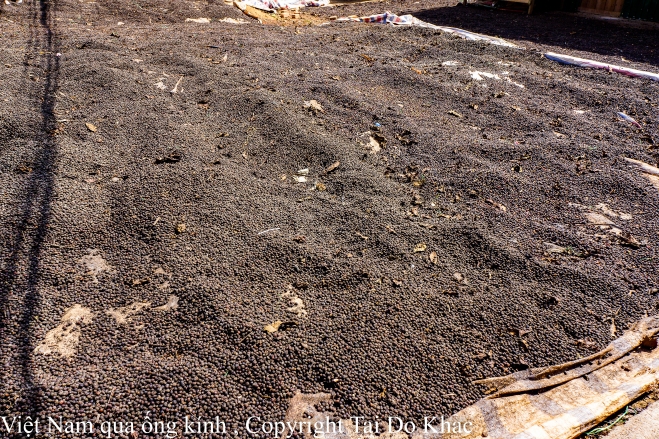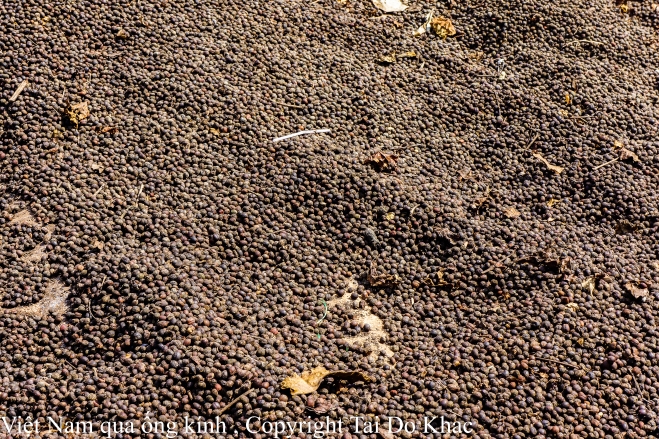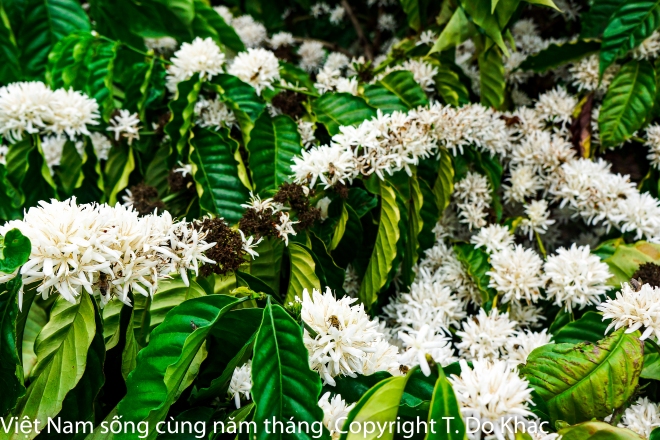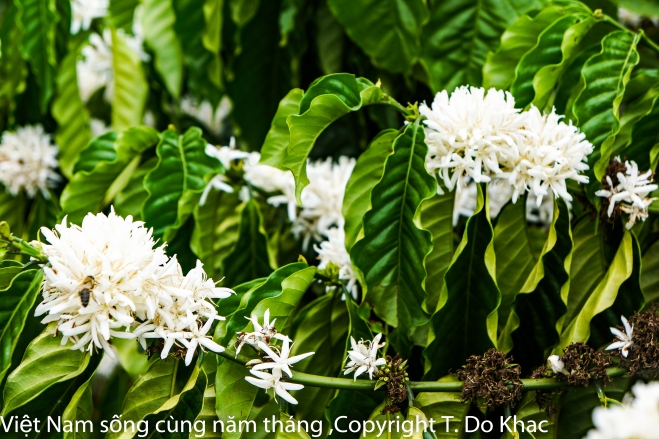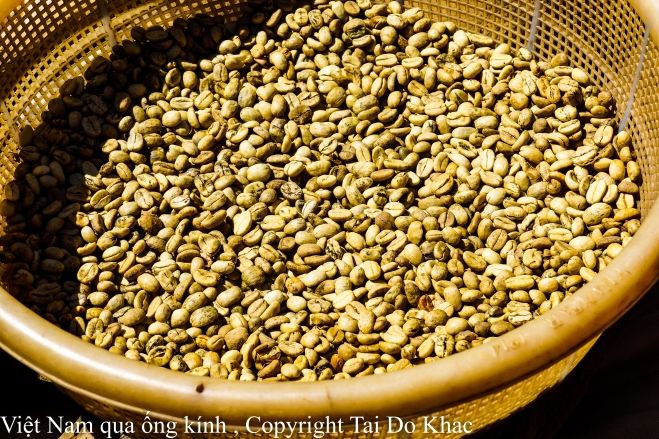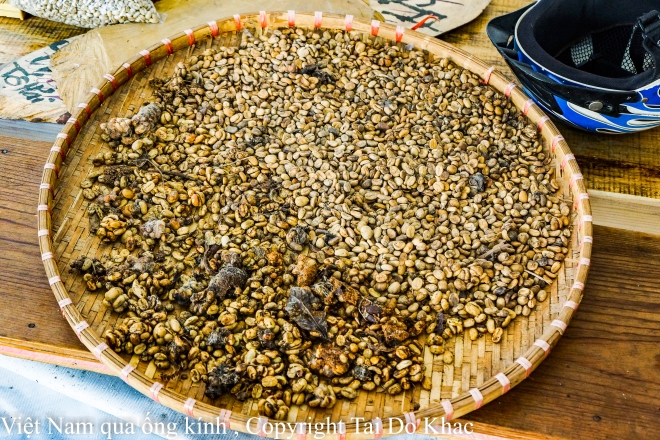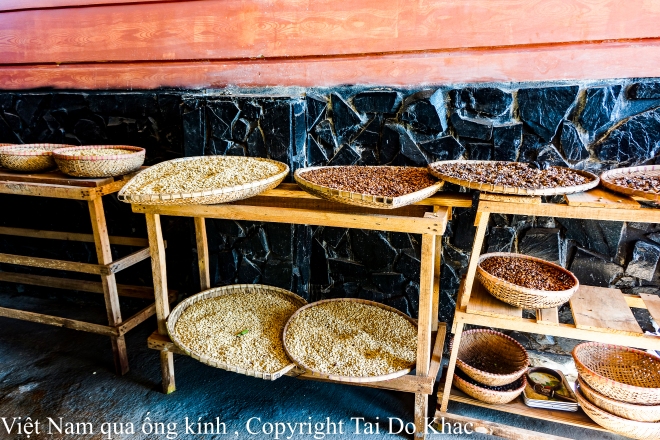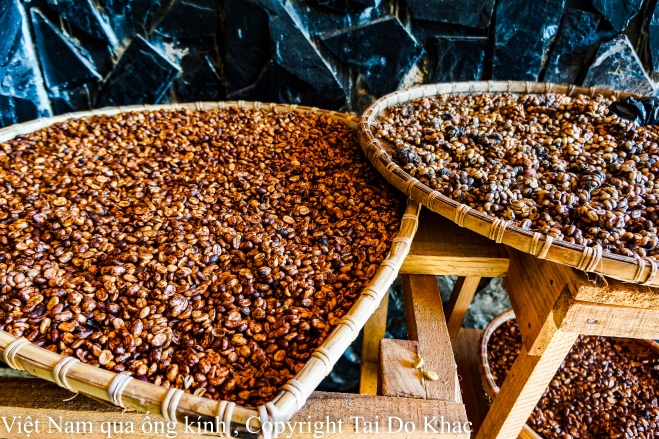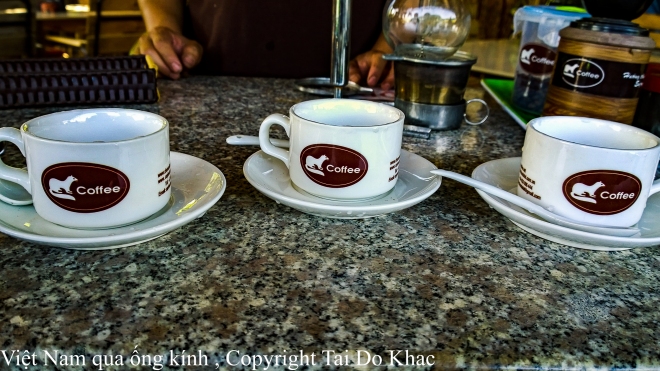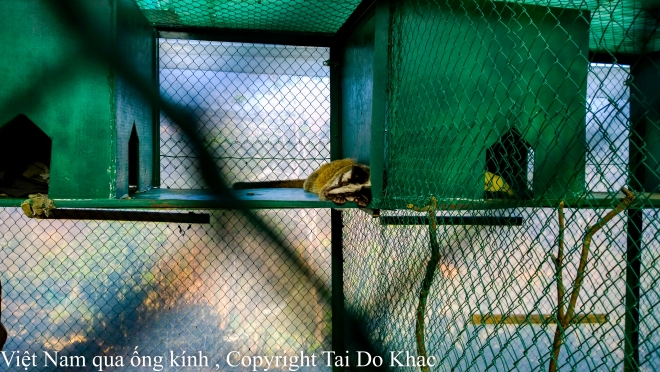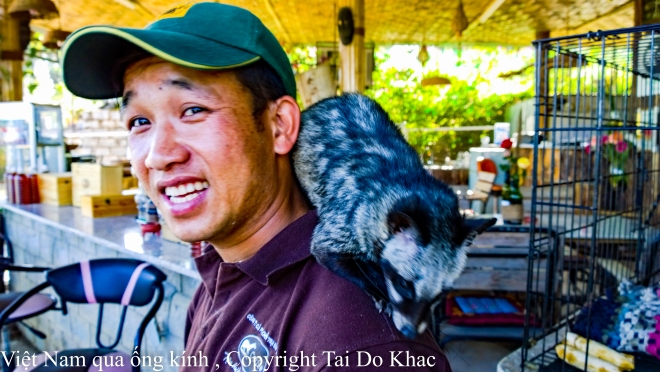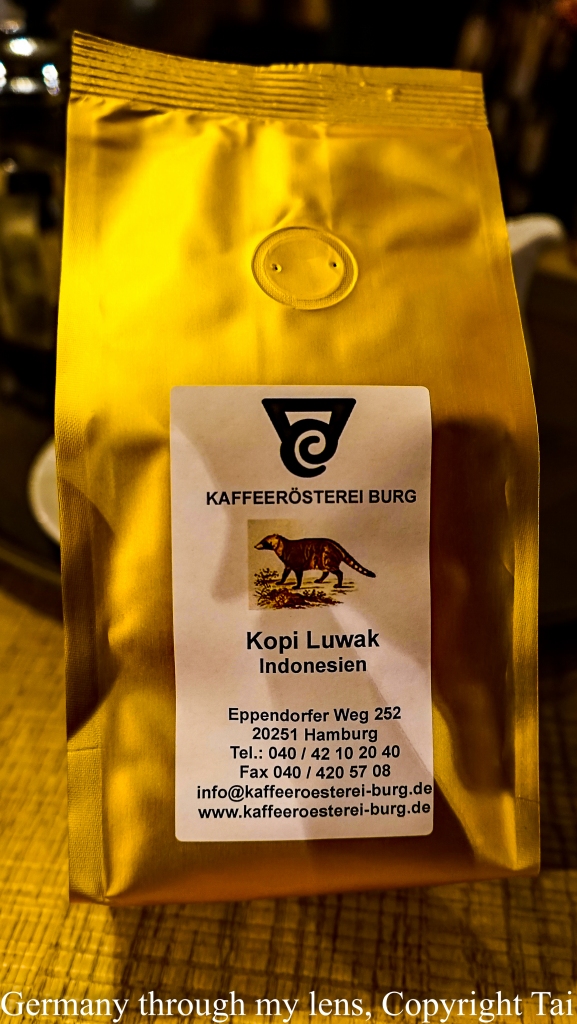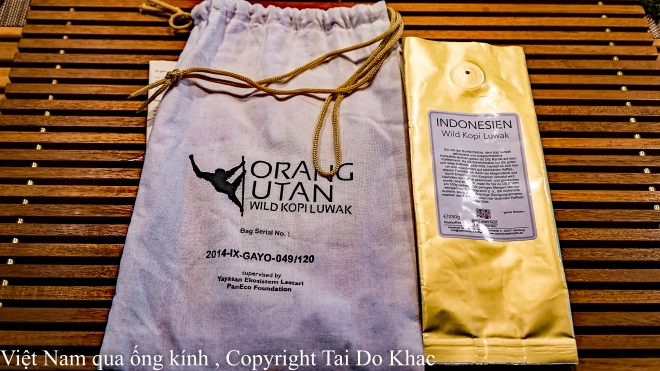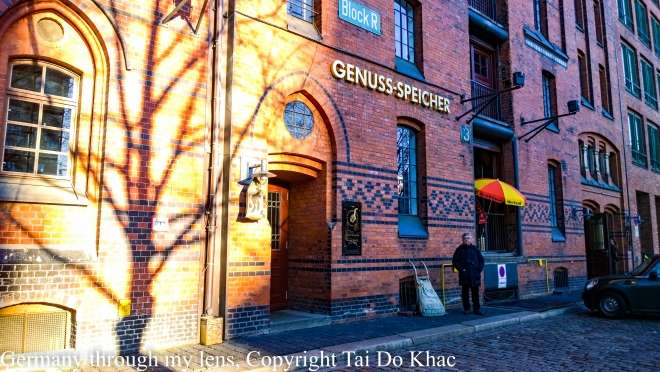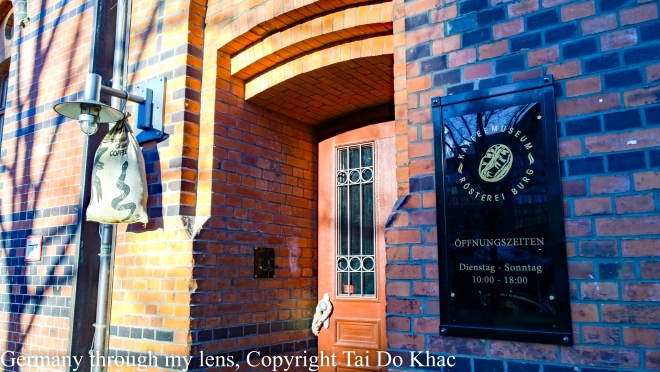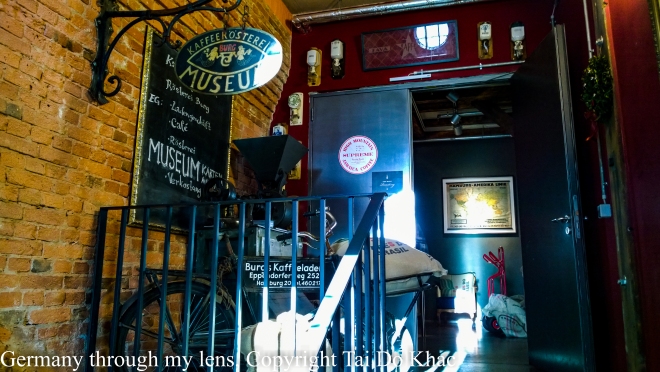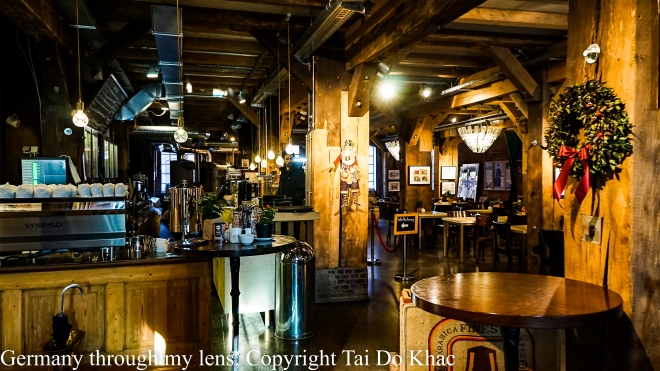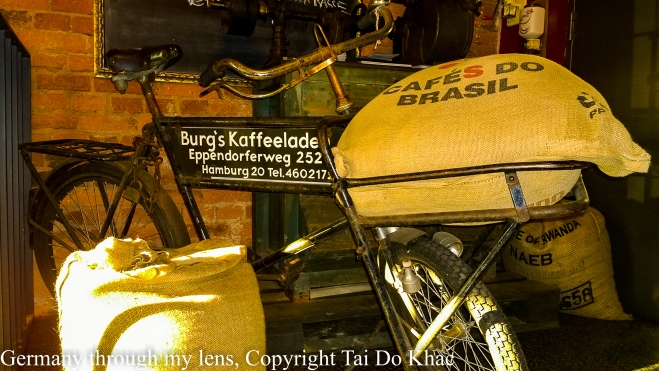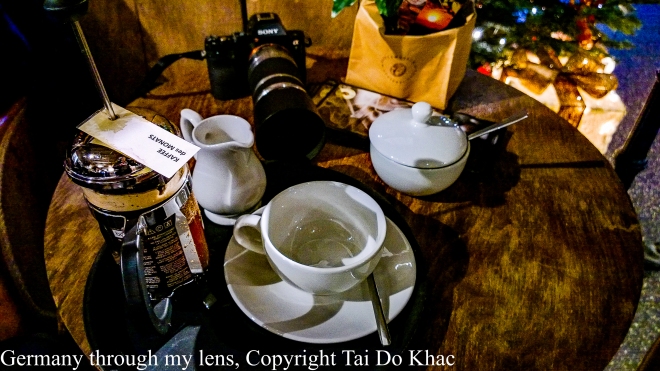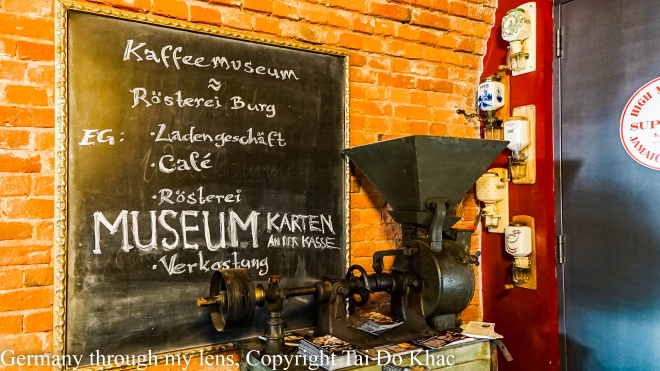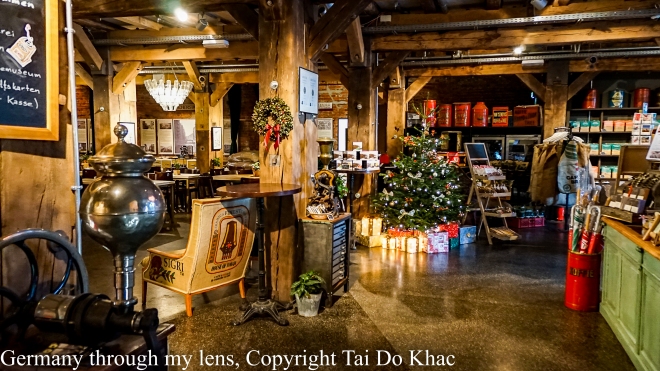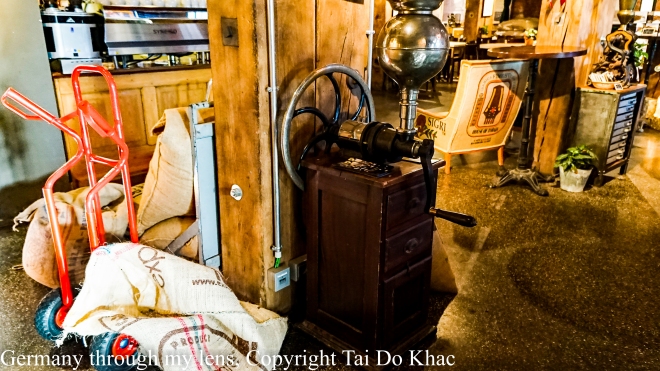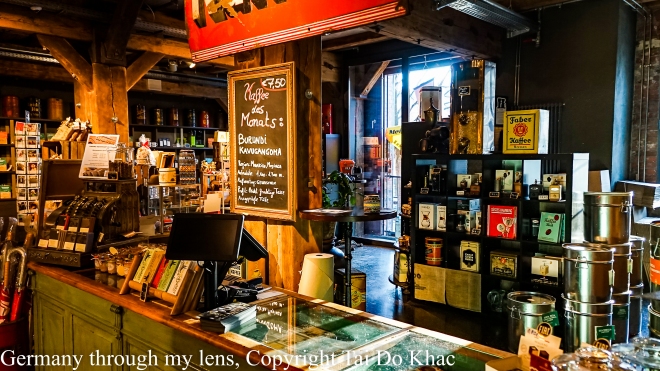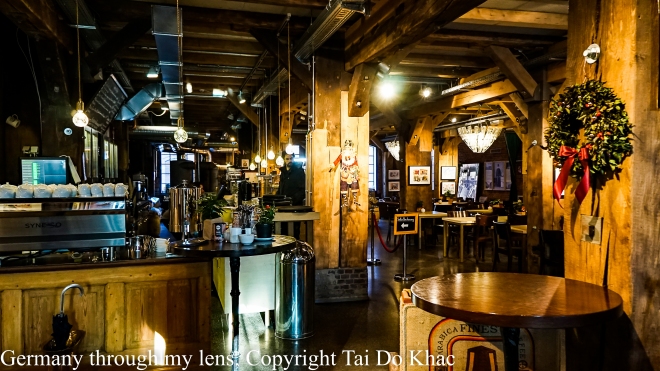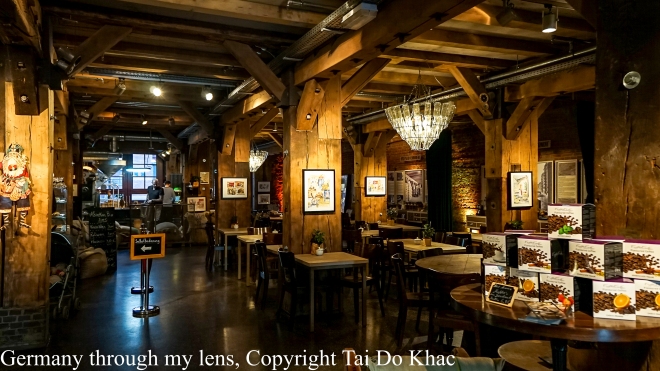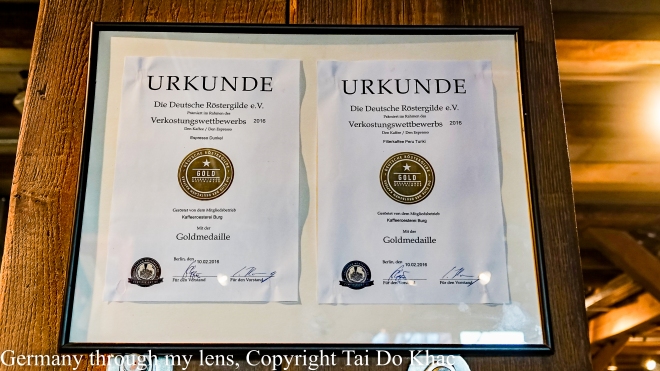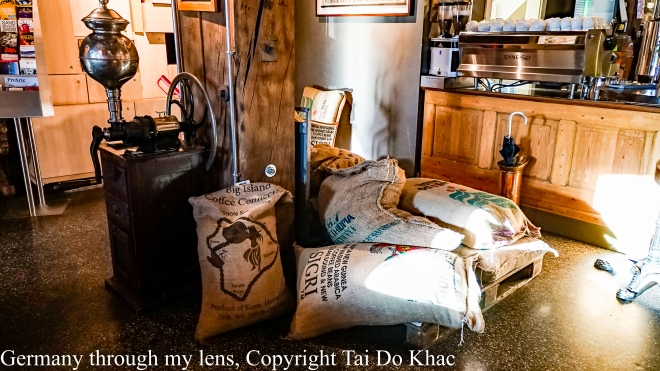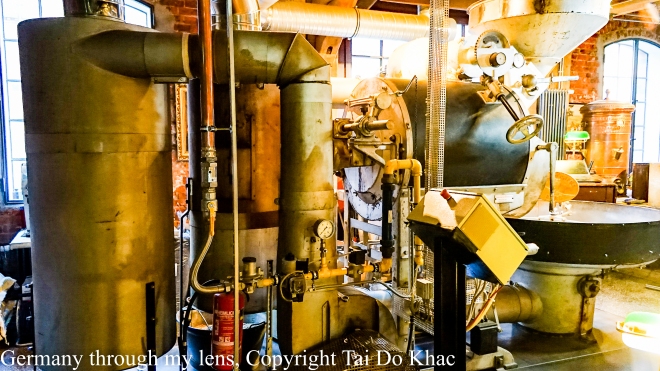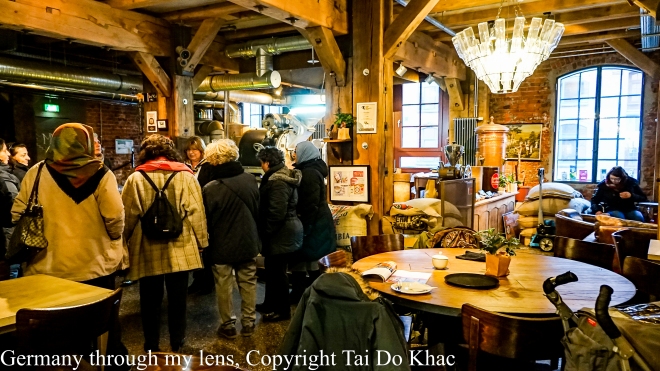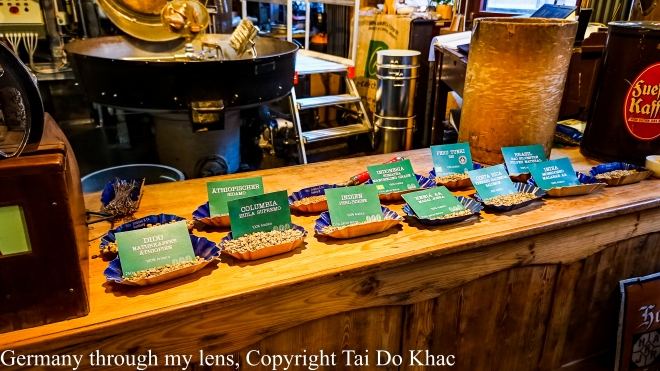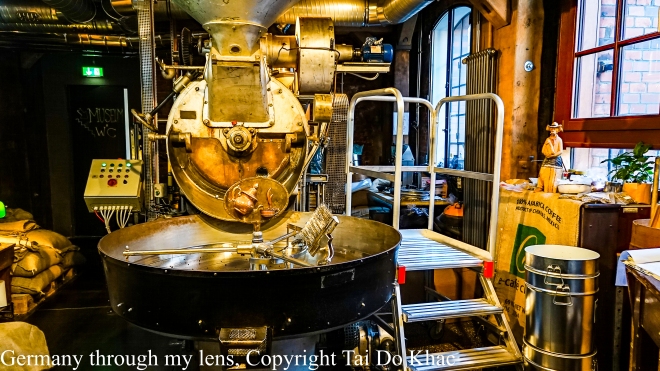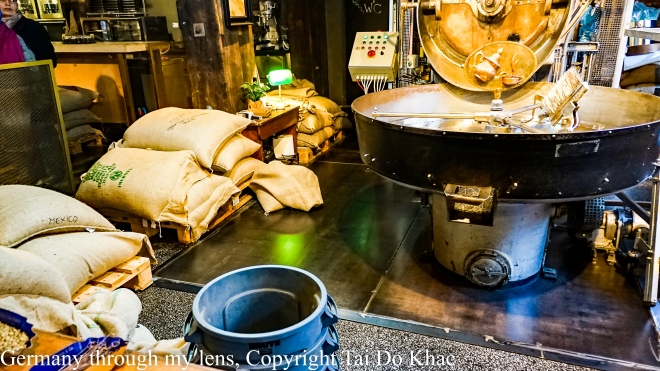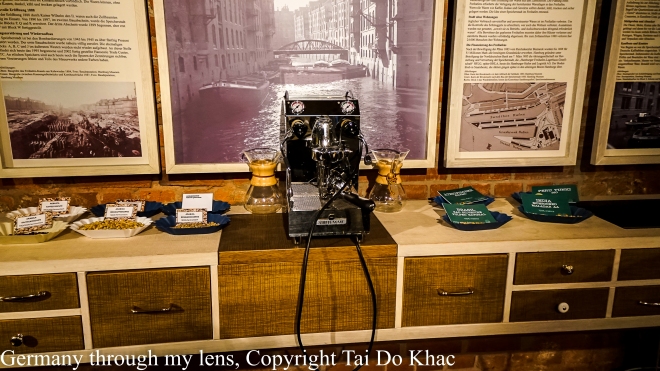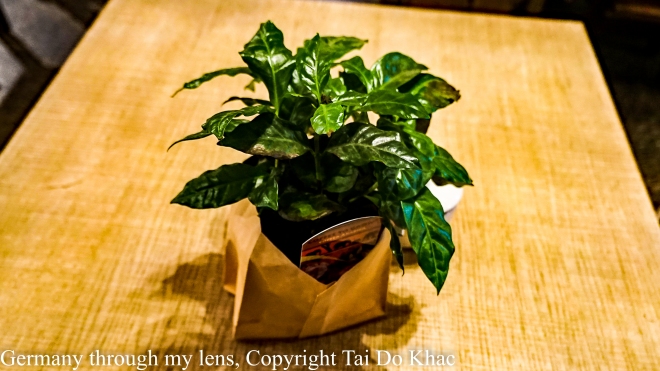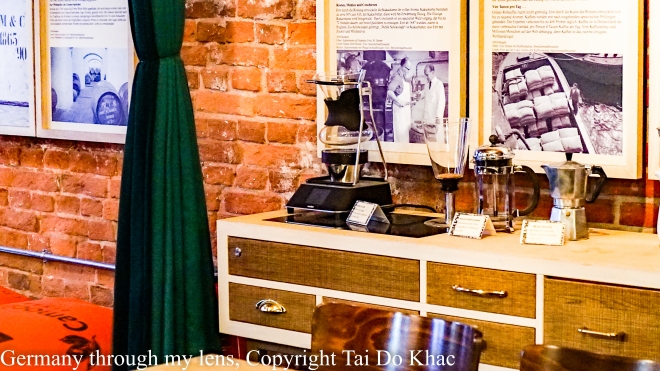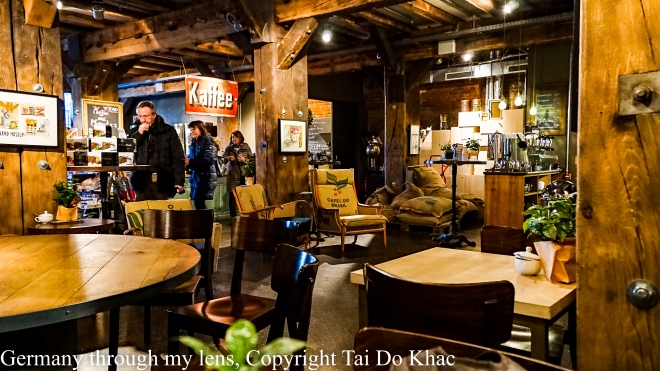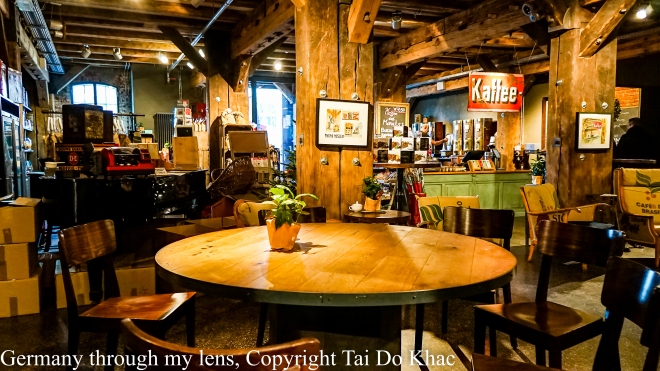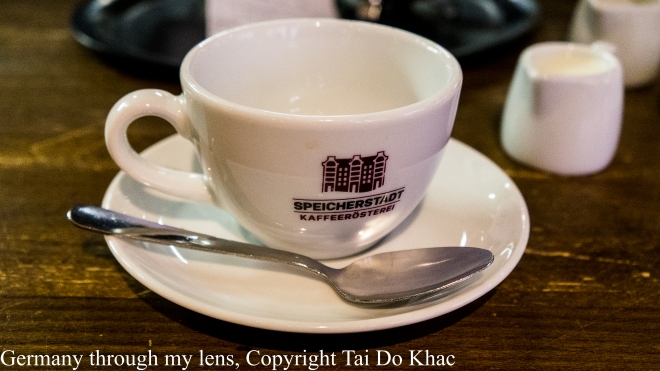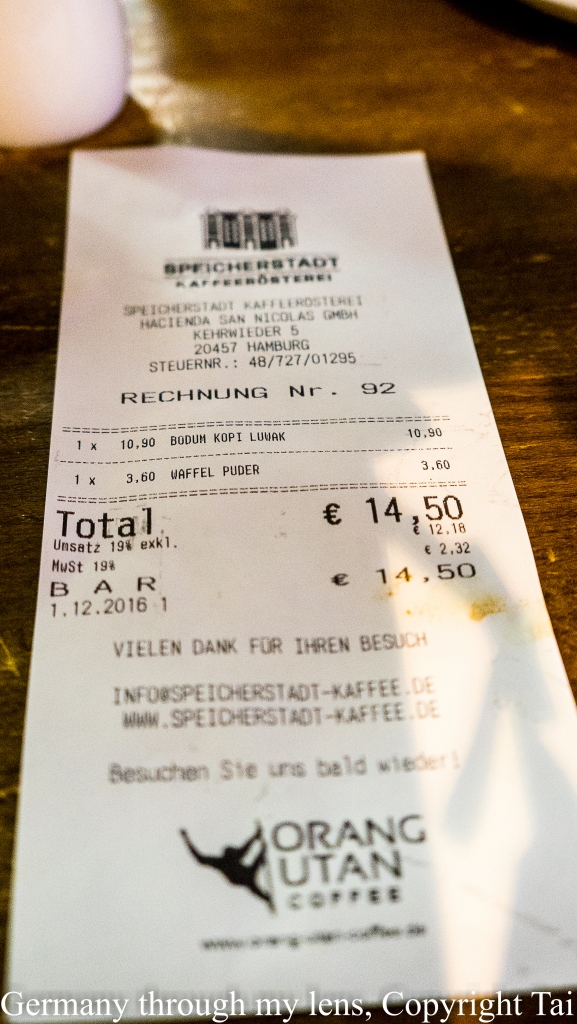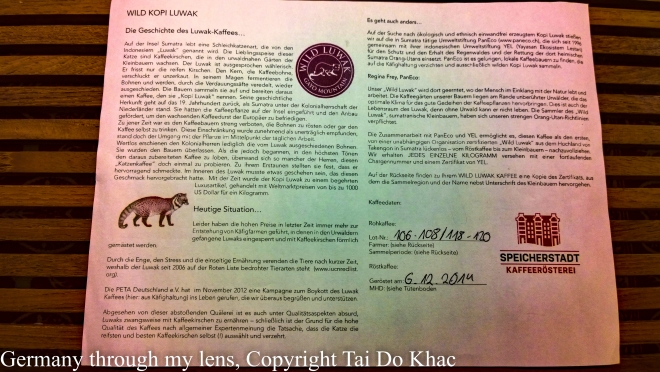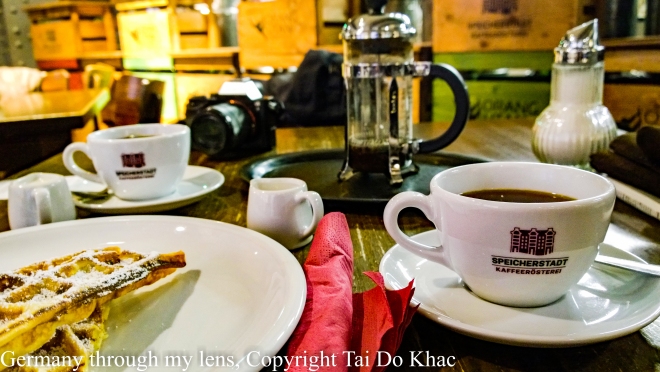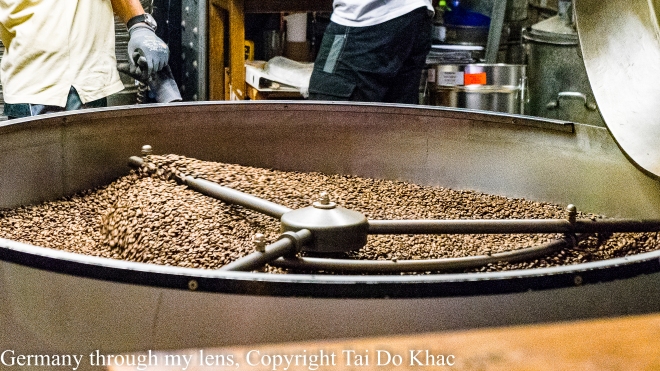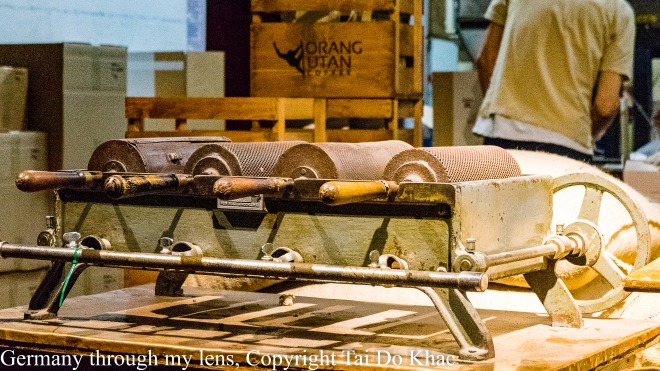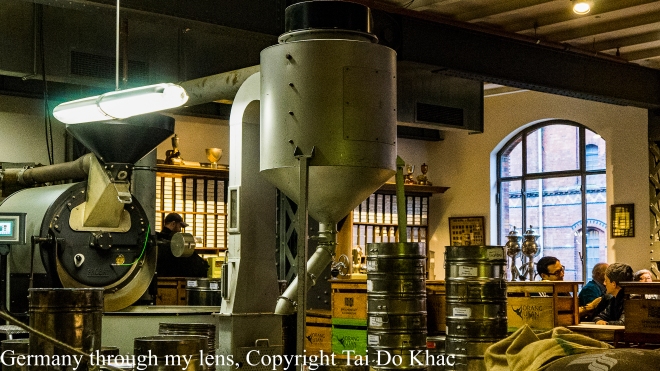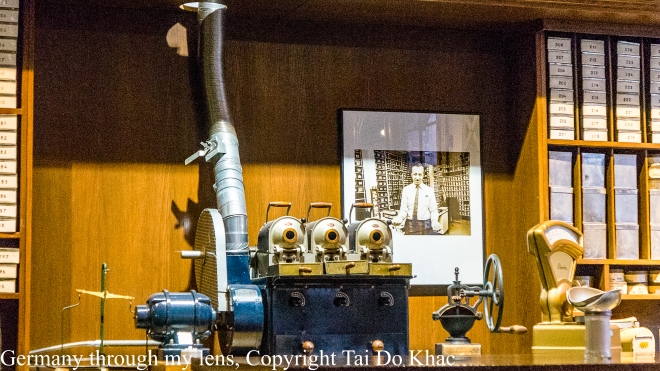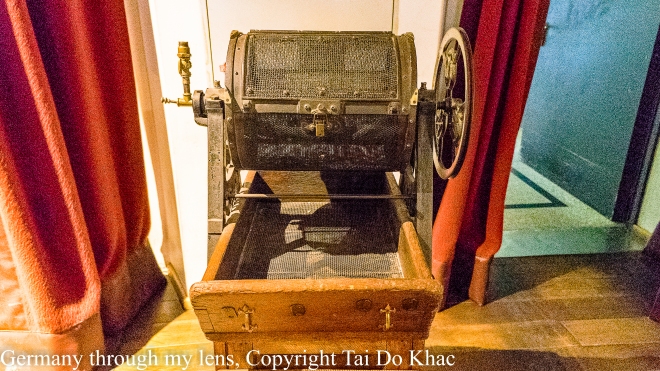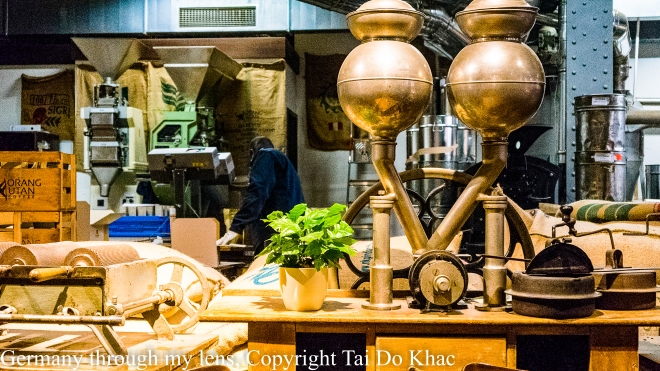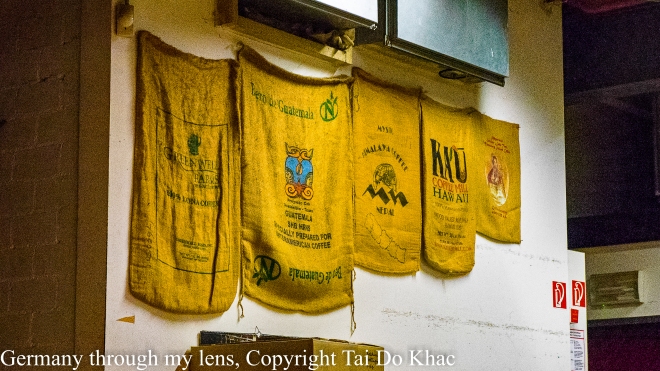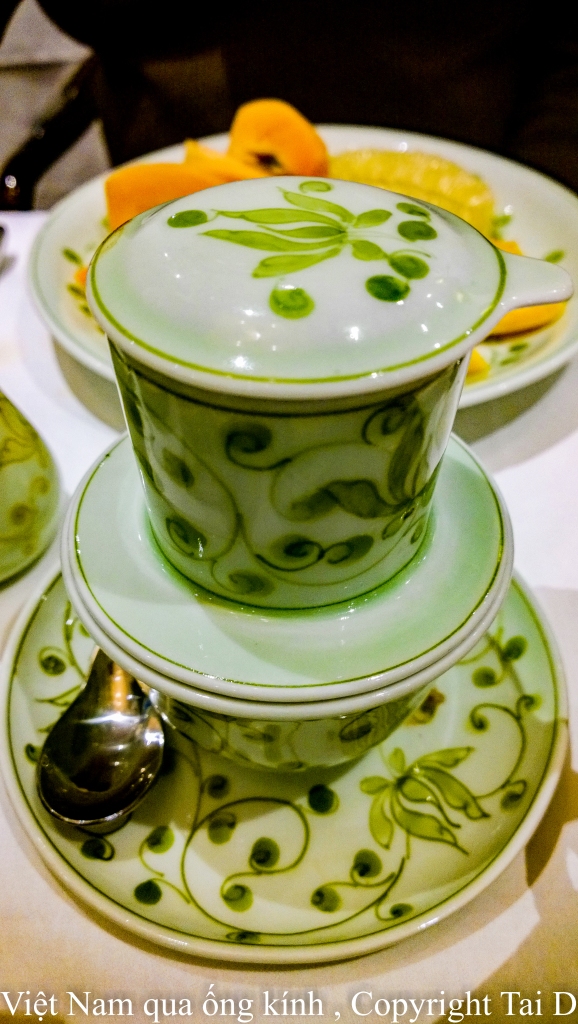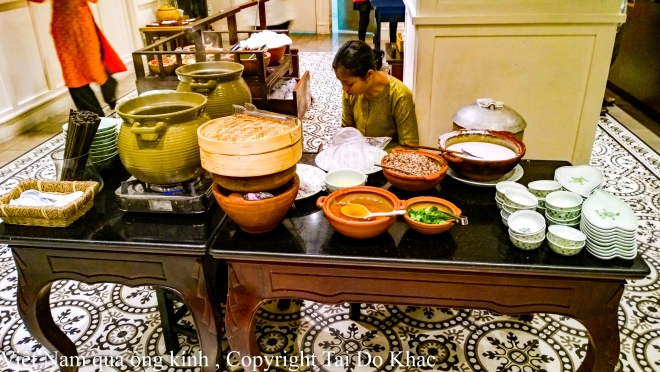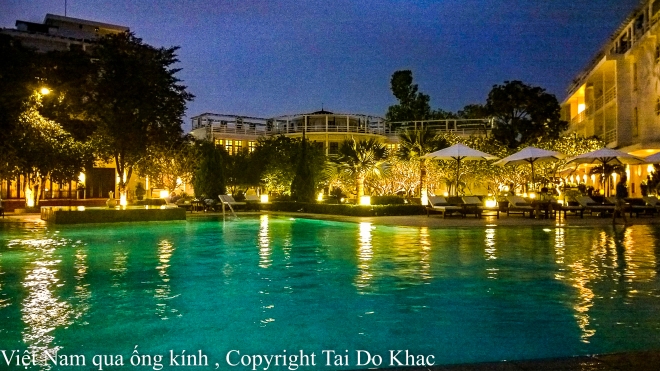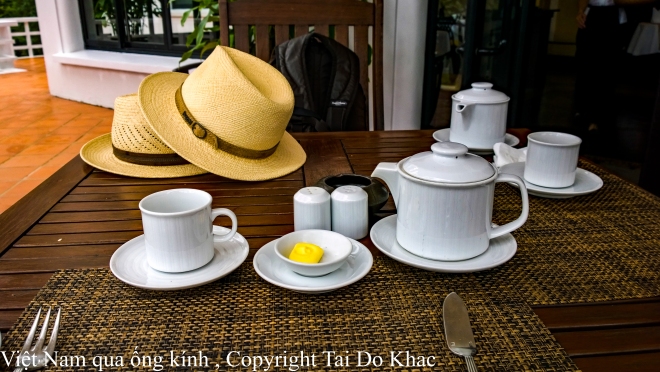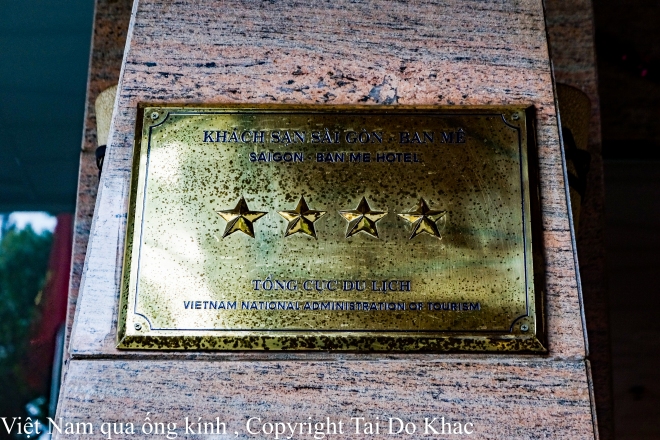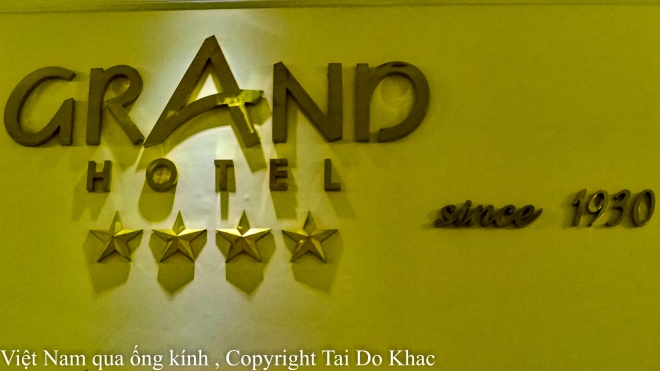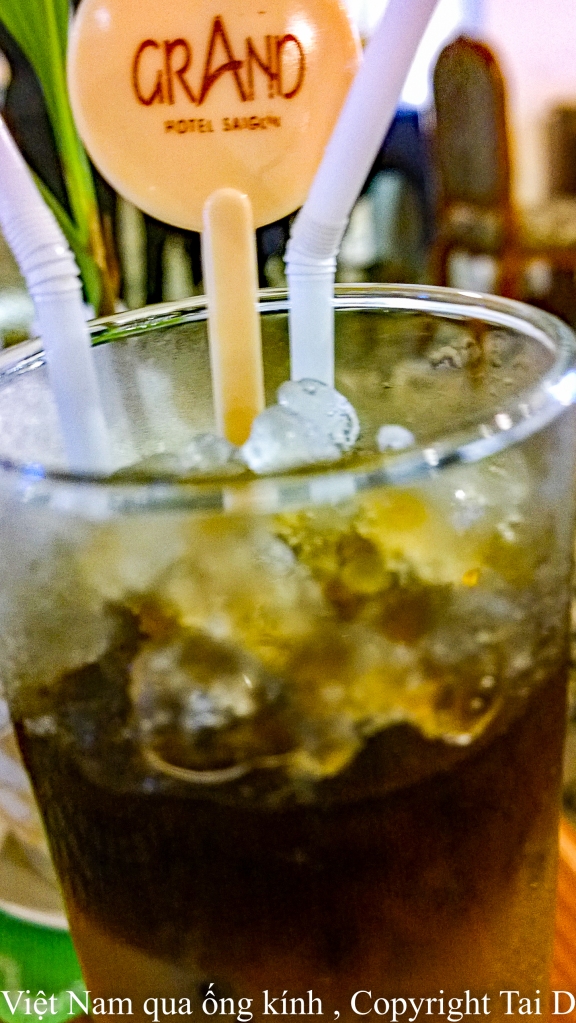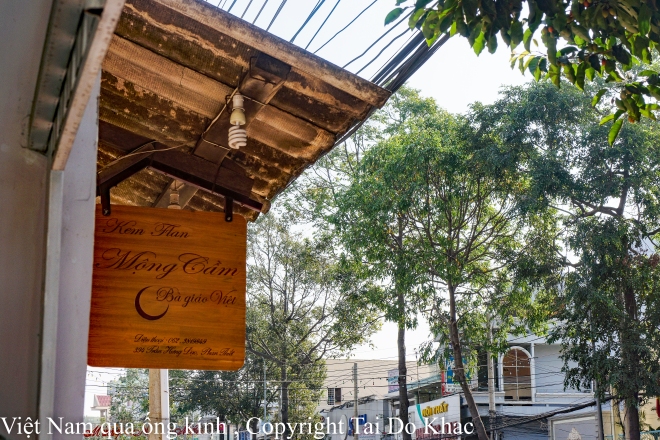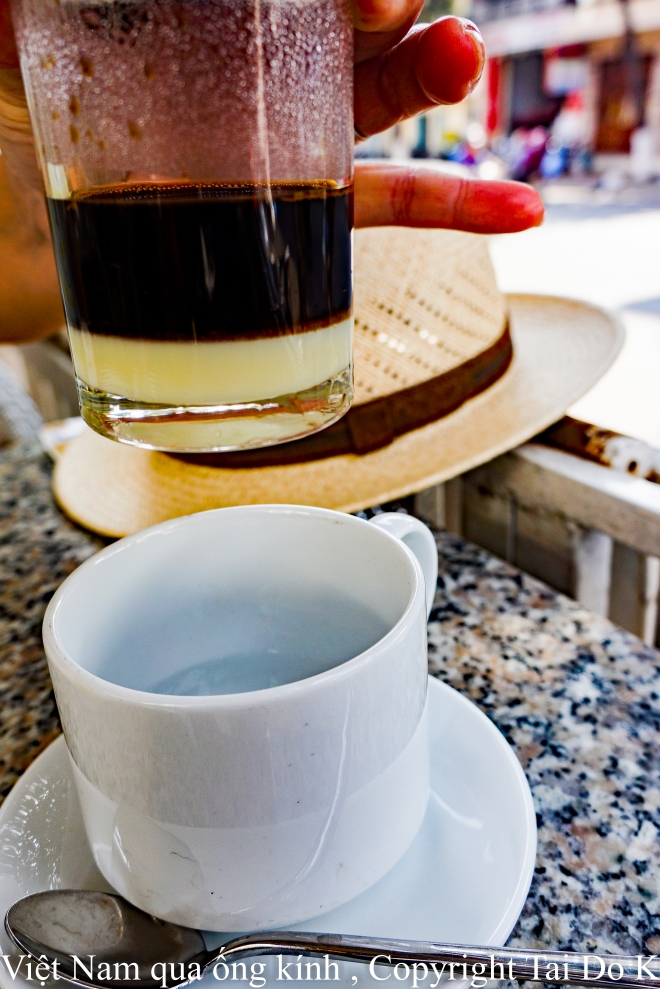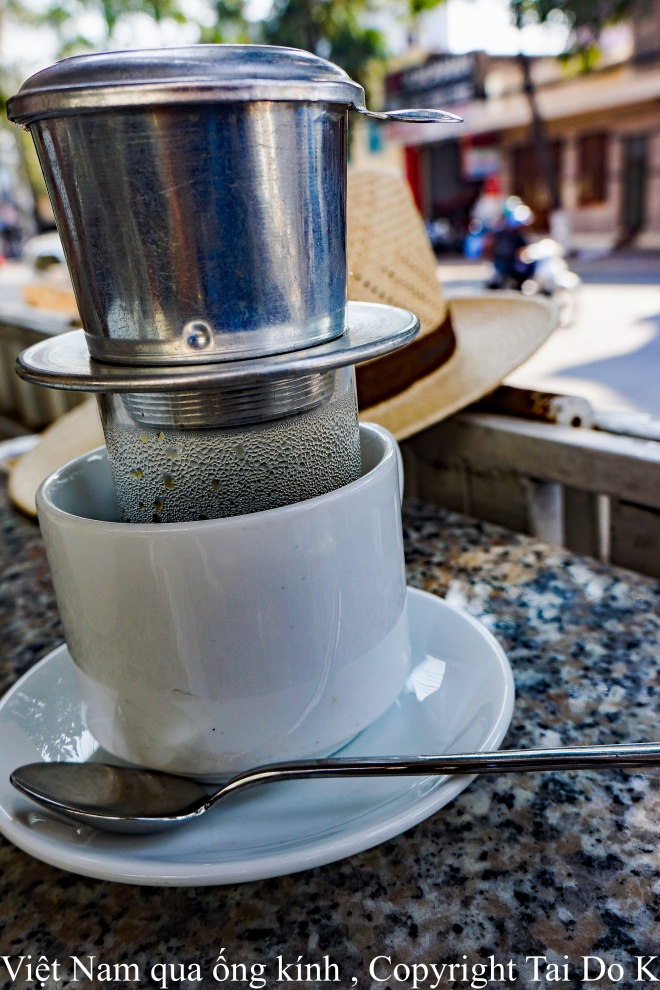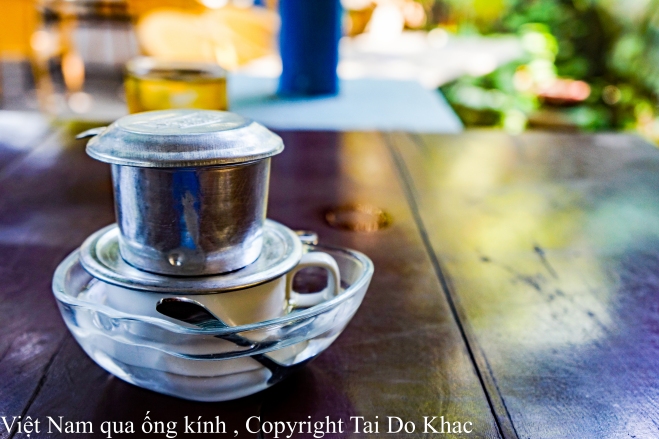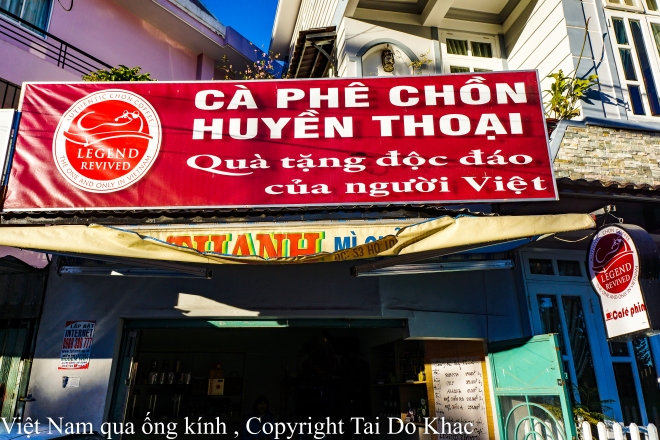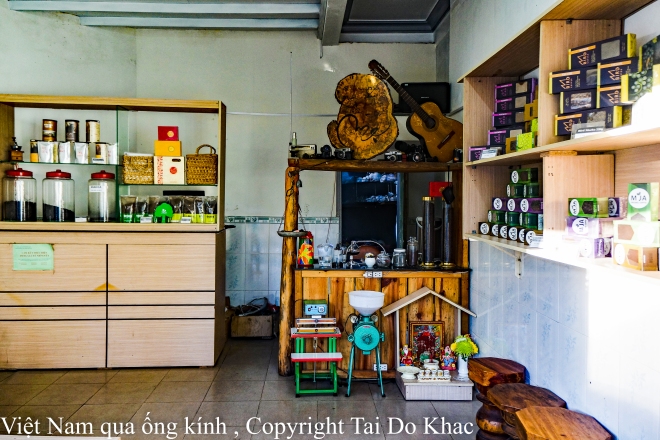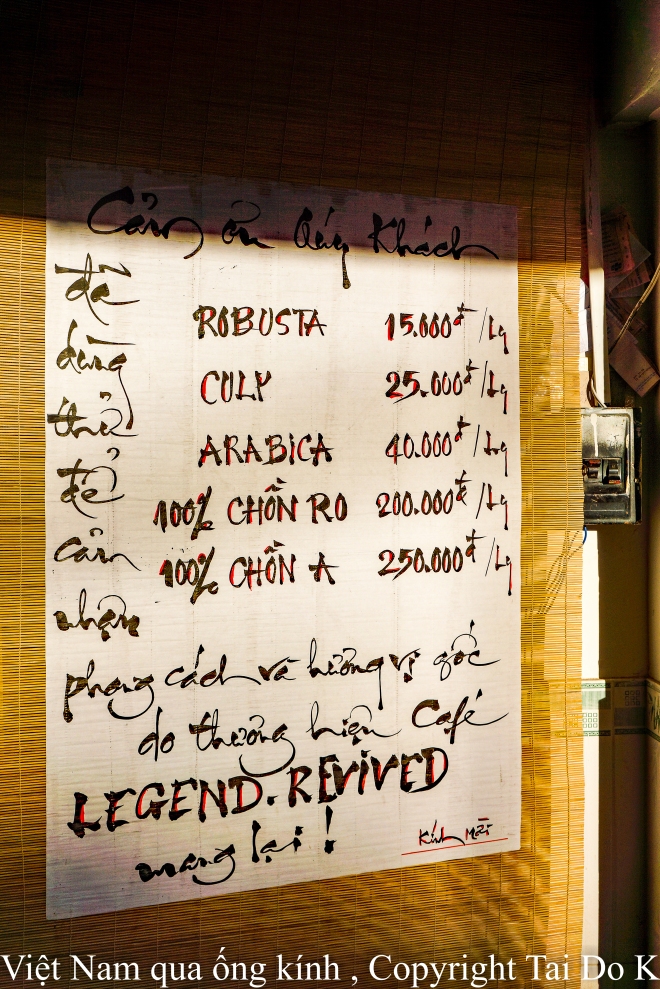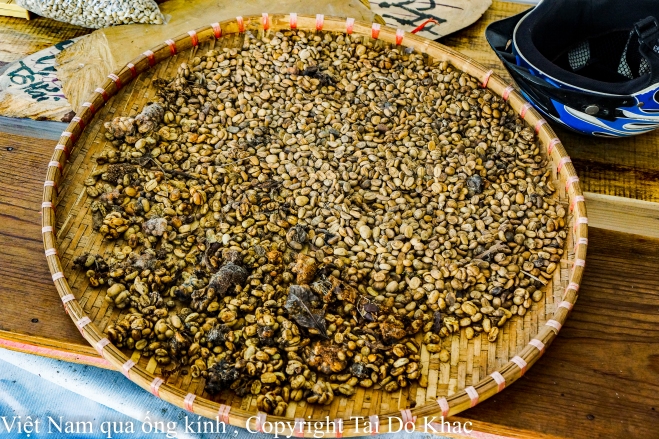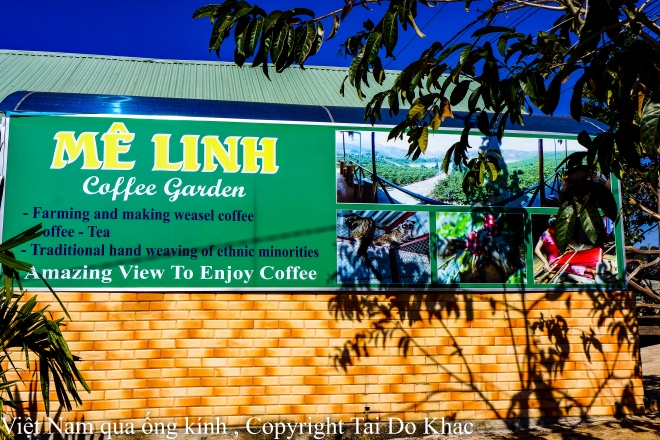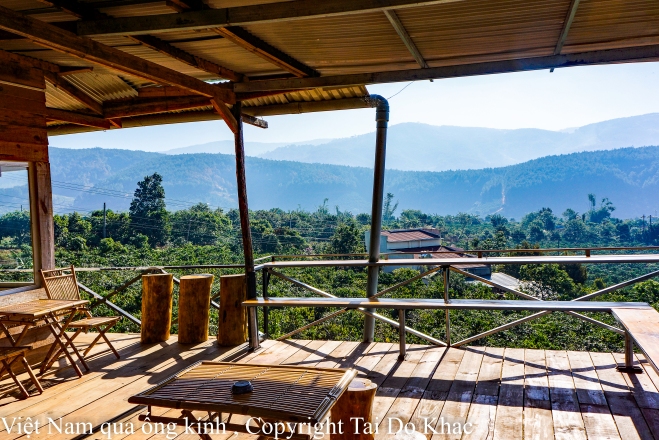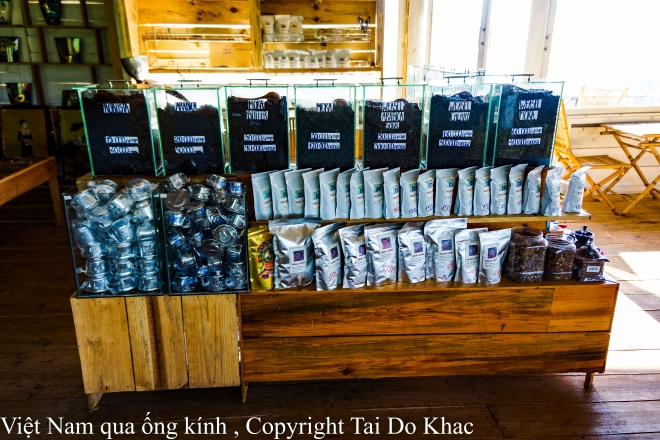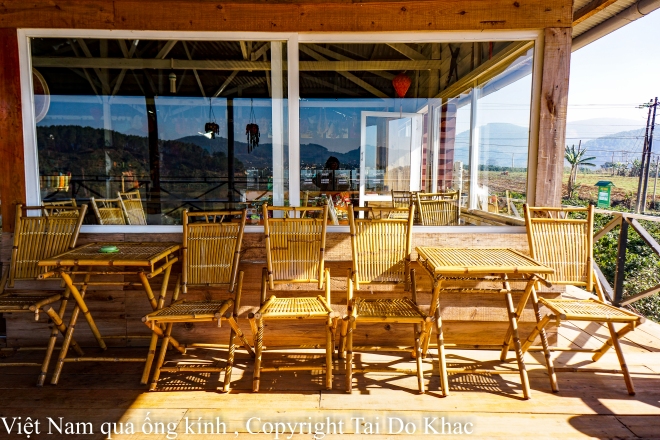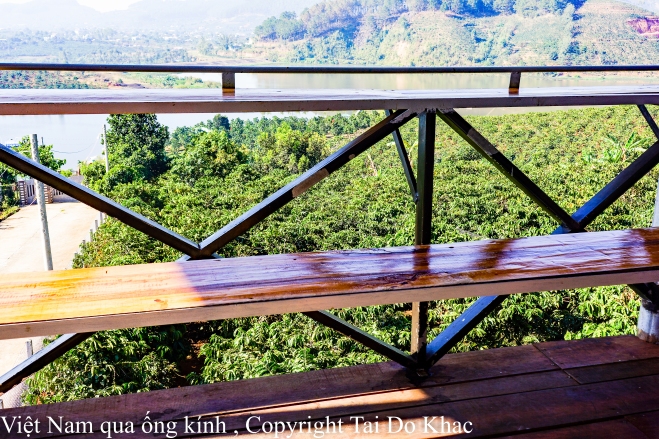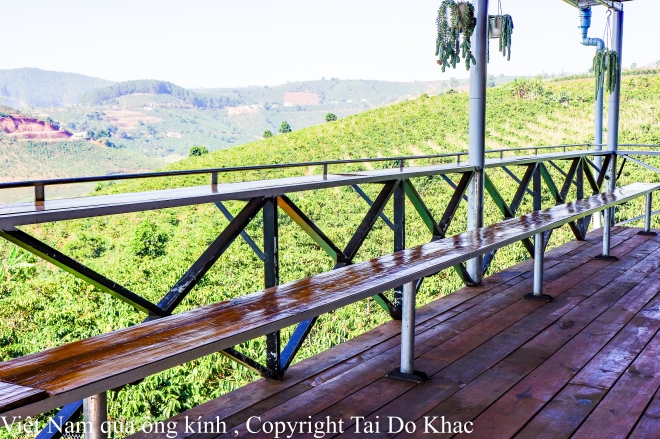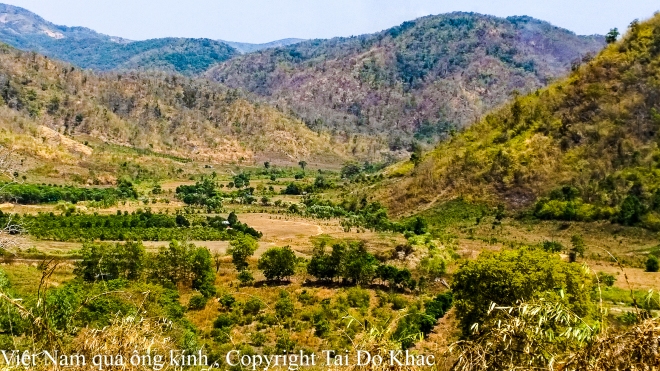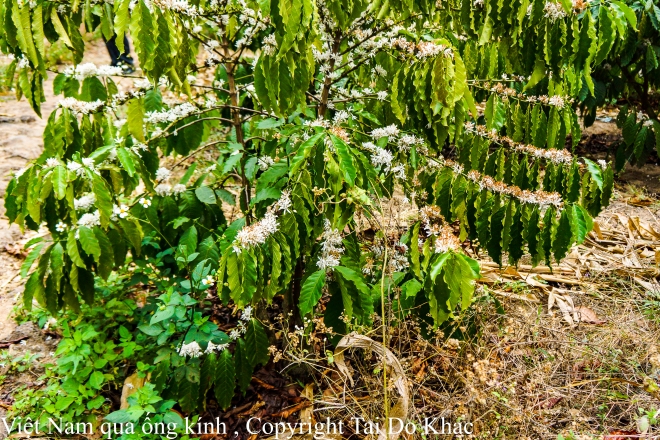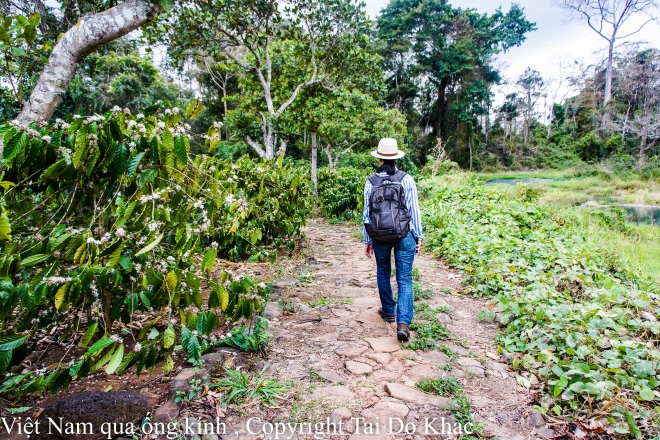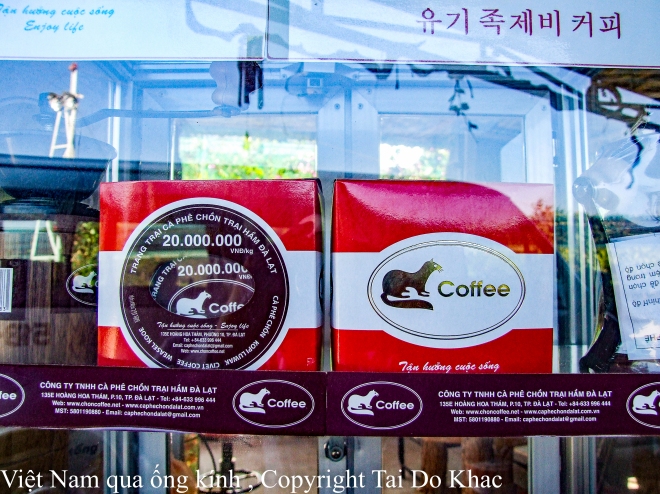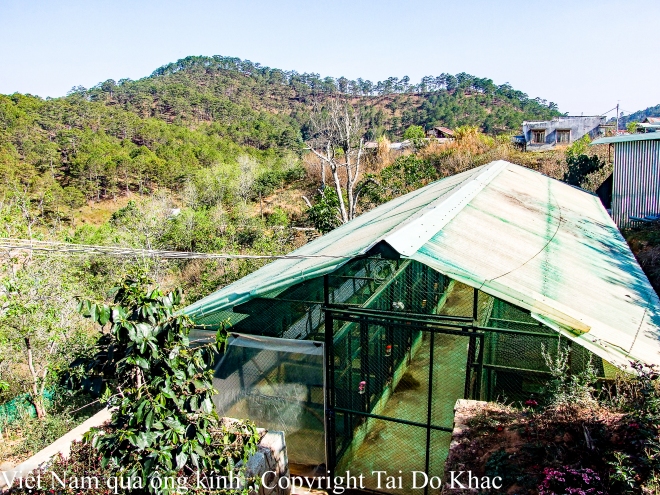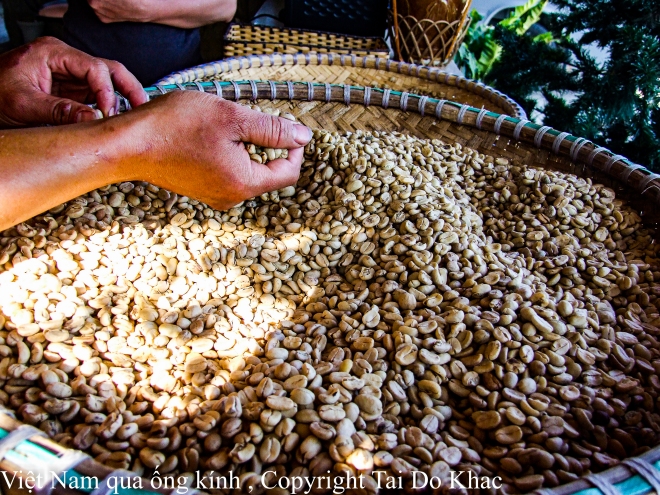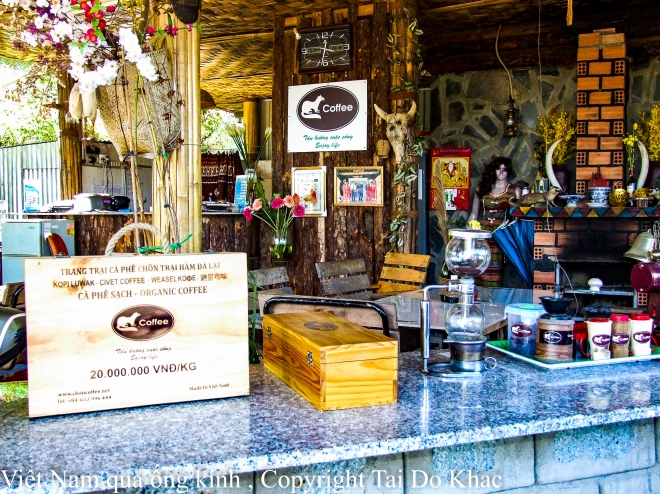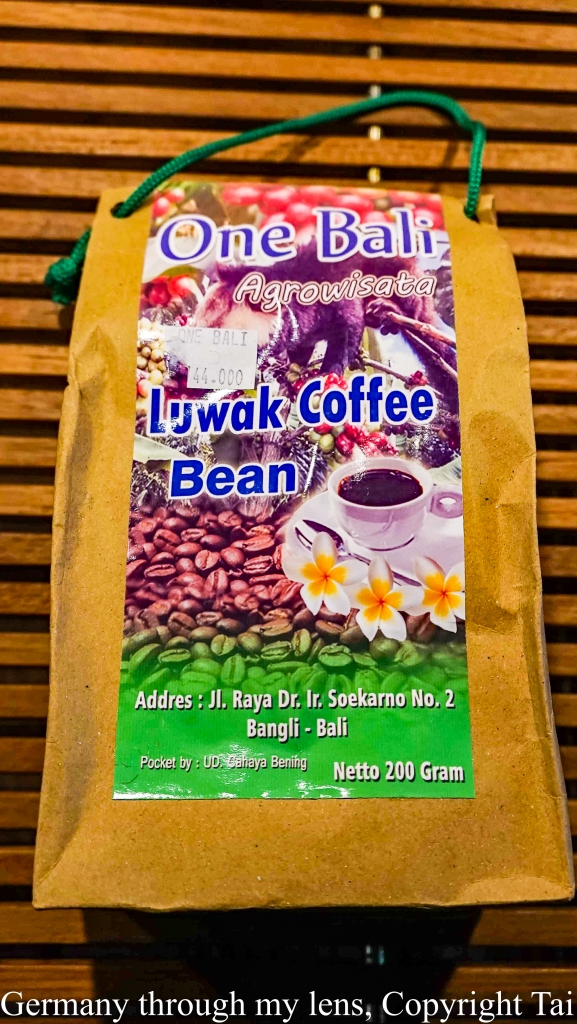According to a legend an Ethopian shepherd saw his goats dance. He called the monks of the close by monastery for help. They observed the animals eating leaves and fruits from a plant.
The monks also fried the red berries and discorvered the stimulating effect of coffee. Ethopia is considered the country of origin for the coffee species Arabica. Initially, the red fruits with their cores eaten raw or cooked and mixed with fat.
Only since the 9th century, coffee is prepared as a drink. Via the ports of Mocha and Medina , coffee spread as far as Cairo.
Until the middle of the 17th century, Arab had a monopoly on coffee growing in Ethopia and in Yemen. In spite of strict bans by the Arabs, several colonial powers managed to get hold of coffee seeds. In climatically suitable colonies, coffee plantations were founded.
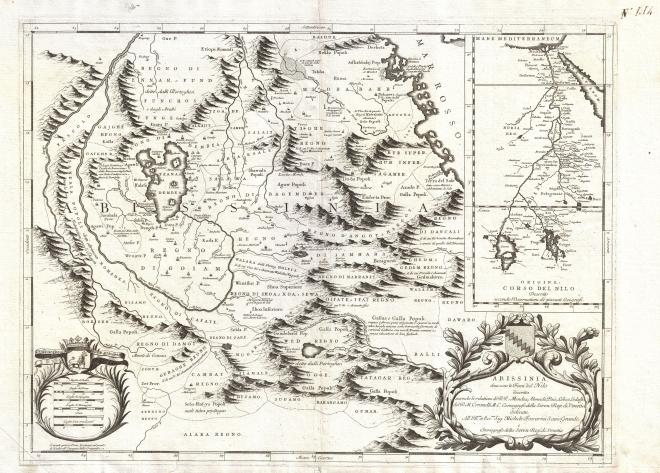
In 1648 , Dutchmen brought coffee plants to Ceylon ( Sri Lanka ), and Indonesia. Later followed Java, Timor, Sumatra and Bali. In 1723, the French began with growing coffee on Martinique. In 1723, the Portugiese started growing coffee in Brazil. From 1740, the Spaniards grew coffee on the Philippines and 1875 in Guatemala. In the 19th and 20th century, Europeans recultivated the coffee growing in Africa. With the “ acquisition “ of the German colonies, coffee was grow in East Afrika as well as on Samoa and German New Guinea . 2016 coffee is grow in more than 70 countries.
Nach einer 1671 von Antonius Faustus Naironus (1636-1707) in seinem Buch De saluberrima potione cahve zu Papier gebrachten Legende sollen einst Hirten aus dem im Südwesten des heutigen Äthiopien liegenden Königreichs Kaffa aufgefallen sein, dass ein Teil der Ziegenherde, der von einem Strauch mit weißen Blüten und roten Früchten gefressen hatte, bis in die Nacht hinein munter umhersprang, während die anderen Tiere müde waren.
Die Hirten beklagten sich darüber bei Mönchen des nahe gelegenen Klosters. Als ein abessinischer Hirte (dessen Name oft mit Kaldi angegeben wird) selbst die Früchte des Strauchs probierte, stellte er auch bei sich eine belebende Wirkung fest. Bei Nachforschungen an der Grasungsstelle entdeckten die Mönche einige dunkelgrüne Pflanzen mit kirschenartigen Früchten.
Sie bereiteten daraus einen Aufguss und konnten fortan bis tief in die Nacht hinein wach bleiben, beten und miteinander reden. Andere Quellen besagen, der Hirte habe die im rohen Zustand ungenießbaren Früchte angewidert ins Feuer gespuckt, woraufhin Düfte freigesetzt wurden; so entstand die Idee des Röstens.
Es wird angenommen, dass die Region Kaffa im Südwesten Äthiopiens das Ursprungsgebiet des Kaffees ist. Dort wurde er bereits im 9. Jahrhundert erwähnt. Von Äthiopien gelangte der Kaffee vermutlich im 14. Jahrhundert durch Sklavenhändler nach Arabien. Geröstet und getrunken wurde er dort aber wahrscheinlich erst ab Mitte des 15. Jahrhunderts.
Der Kaffeeanbau brachte Arabien eine Monopolrolle ein. Handelszentrum war die Hafenstadt Mocha, auch Mokka genannt, das heutige al-Mukha im Jemen. Die äthiopische Zubereitungsart und Kaffeetradition ist wohl die ursprünglichste: Nach dem Rösten der Bohnen in einer großen Eisenpfanne werden diese grob gemahlen oder im Mörser zerstampft.
Das Mahlgut wird mit Wasser und Zucker in der sogenannten Jabana, einem bauchigen Tonkrug ähnlich einer Karaffe, aufgekocht und in kleinen Schalen serviert. Das Wort Kaffee lässt sich bis auf das arabische qahwa zurückverfolgen, das neben Kaffee auch Wein bezeichnen kann. Über das Türkische kahve gelangte es ins Italienische (caffè) und von dort ins Französische, dessen Wortform café ohne große lautliche Änderungen ins Deutsche übernommen und nur in der Schreibweise angepasst wurde.
Von Johann Wolfgang von Goethe stammte die Idee, man solle die Bohnen destillieren. Beim Umsetzen des Gedankens entdeckte der Chemiker Friedlieb Ferdinand Runge das Koffein. [1]
Theo một truyền thuyết đã được ghi lại trên giấy vào năm 1671, những người chăn dê ở Kaffa (thuộc Ethiopia ngày nay) phát hiện ra một số con dê trong đàn sau khi ăn một cành cây có hoa trắng và quả màu đỏ đã chạy nhảy không mệt mỏi cho đến tận đêm khuya. Họ bèn đem chuyện này kể với các thầy tu tại một tu viện gần đó. Khi một người chăn dê trong số đó ăn thử loại quả màu đỏ đó anh ta đã xác nhận công hiệu của nó. Sau đó các thầy tu đã đi xem xét lại khu vực ăn cỏ của bầy dê và phát hiện ra một loại cây có lá xanh thẫm và quả giống như quả anh đào. Họ uống nước ép ra từ loại quả đó và tỉnh táo cầu nguyện chuyện trò cho đến tận đêm khuya. Như vậy có thể coi rằng nhờ chính đàn dê này con người đã biết được cây cà phê.
Người ta tin rằng tỉnh Kaffa của Ethiopia chính là vùng đất khởi nguyên của cây cà phê. Từ thế kỉ thứ 9 người ta đã nói đến loại cây này ở đây. Vào thế kỉ thứ 14 những người buôn nô lệ đã mang cà phê từ Ethiopia sang vùng Ả Rập. Nhưng tới tận giữa thế kỉ thứ 15 người ta mới biết rang hạt cà phê lên và sử dụng nó làm đồ uống. Vùng Ả Rập chính là nơi trồng cà phê độc quyền. Trung tâm giao dịch cà phê là thành phố cảng Mocha, hay còn được gọi là Mokka, tức là thành phố Al Mukha thuộc Yemen ngày nay.
Cách thức pha chế cà phê truyền thống của người Ethiopia có lẽ là cách thức cổ xưa nhất. Hạt cà phê được cho vào một cái chảo sắt to và rang lên, sau đó được nghiền vụn ra hoặc cho vào cối giã. Chỗ hạt giã vụn đó được trộn với đường trong một cái bình gọi là jebena (một loại bình cổ thon có quai), nấu lên và đổ ra bát.[1]
Coffee is considered the primadonna of plants , being demanding and susceptible for illnesses. After six to eight years the tree carries the maximum crop. The plants are growing blossoms and fruits at the same time, therefore they must be picked over and over again and the harvest time can last up to four months. Even today in most countries coffee must be picked by hand.
To generale the coffee taste there are different by hand.
To general the coffee taste there are different ways of treatment.
Wet processing or “ washed coffees “ . The flesh of the fresh coffee fruits is crushed from the core and the cores are put in water basins. The sugar of the fruit leftovers causes fermentation in the cores. Afterwards the cores must be dried in the sun. With west processing a lot of water has to be used, in Kenia for an example up to 300 litres for 1 kilogramm of coffee. Without further processing the water cannot be reused.
Dry processing or “ unwashed coffee “ means that the wohle coffee fruits are dried in the sun. This is another way of fermentation. For a thorough drying, the fruits must be turned frequently. After drying, the fruit shells are removed mechanically.
15 kilos coffee fruits give about 2,5 kilos of green raw coffee.
Natural Pulped is a procedure in which the ripe fruits were sorted in water, then the fruits are crushed from the cores and directly dried in the sun. This creates a good coffee quality while using little water.
Arabica or Robusta
The word “ Coffee “ is derived from the Arabian “ Kahwe “ or “ Qahwa “ , which stands for vitality or strength.
The coffee plant belongs to the family of the Rubiceen.
Coffeen is grown in the tropic and subtropic regions ( up to 30 degrees latitude north and south of the equator )
The coffee species Arabica ( Coffea arabica typica ) delivers about 61 percent and Robusta ( Coffea canephora ) about 39 percent of the world ‚ s harvest.
Arabusta , Bourbon, Caturra, Gheiha and others are varietes created by mutation and cultivation.
Arabica coffee is considered as nobler and the cultivation as more demanding, the coffee is more aromatic in taste than Robusta and can grow at altitudes up to 2,000 meters. The beans are long oval, and green – bluish.
Robusta coffee grows in rain-rich, lower loacations up to 900 meters. Robusta plants are less sensitive than Arabica and bring a higher yield. The cores are more round and yellow- brownish.
Coffee trees grow up to 10 metre high trees. However, in plantations the plants are cut to schrub height. Due to their form and color, ripe fruits are called coffee cherries.
In former times the warehouse keeper were called “ Quartiermänner“ like e.g. “ Eichholtz & Consorten “ . They offered full service range to their customers. From working the ship documents, to storage until delivery to the roasters, a small number of warehouse keepers offered the complete services.
These include all steps like sampling, cleaning, weighing, sorting for bean size and for bad beans and mixing of different sorts. Today the traditional coffee storage in a historical warehouse does not place any more.
The warehouse keepers now called “ Seegüterkontolleure “ , have moved to the other side of the River Elbe and work with palettes and forklifts. Today a large part of coffee comes loose in a contianer.
Then this “ bulk freight “ is tipped in front of the towers of the coffee silos and stored separately according to provenances in different silo cells. Best quality coffee are still coming in sacks.
In the beginning, the oriental process of roasting was common. In a pan or simply on a metal plate over a fire, the beans were being constantly turned over.
By the mid of the 17th century the first roasting – cyclinders which could be rotated over the open fire were developed. But filling as well as emptying the cyclinder was complicated.
And it was not possible to visually control the roasting progress, because the cylinders over the fire were closed.
Coffee can develop by roasting 800 up to 1000 flavours. The roasting time for traditional roasting is 15 to 20 minutes about 200 degrees centigrade. Thereby , the coffee loses up to 20 percent of weight. From 2.5 kilograms of green raw coffee , about 2 kilograms of roasted coffee result from a traditional longtime roasting.
Industrial roasting means a quick roasting with up to 500 degrees centigrade in only 90 to 270 seconds. Thereby the weight loss is considerably lower as well as the energy costs.
Such coffees contain the hardly acceptable Chlorogen – acid which many coffee drinkers only recognize afterthe drink cooled down and tastes acidic.
Coffee is the most consumed drink in Germany , an average of four cups of coffee are drunk each day and millions of people in the world are depended on the coffee growing, trade and handling , because coffee is the second most important trade good in the world, only topped by raw oil.
Green raw coffee smells slightly like grains. Only by the art of the roasting about 800 till 1000 flavours can be developped.
Hence, coffee samples are roasted and bought only after intensive sensory checks coffee is a natural product and in every harvest, by treatment or on the long routes of transport , mistakes can appear.
In 1887 world’s third most important coffee stock exchange .
Robusta coffees contain twice as much caffeine as Arabica coffees. If Robusta is prepared with the expresso machine, the processing time is very short and only little caffeine extracted.
This is why a Robusta coffee prepared as espresso contains less caffeine than an Arabica coffee which was filtered traditionally.
The Italian Luigi Bezzera patented 19.11.1901 the first Espresso Machine. In 1905 his friend Desidero Pavoni started to produce the machines.
The quality of the espresso depends on the choice of the coffee, the coffee amount, the milling, the water quality and the water temperature. With suitable milling, about 9 bars pressure and 92 degrees centigrade of water temperature a good espresso machine can extract the best in 15 to 20 seconds. The result is a coffee concentrate.
Not all coffees are suitable for the espresso preparation because due to the high concentration they might loose flavor or develop extreme acidity.
Đồn điền cà phê đầu tiên được lập ở Việt Nam là do người Pháp khởi sự ở gần Kẻ Sở, Bắc Kỳ vào năm 1888. Giống cà phê arabica (tức cà phê chè) được trồng ở ven sông. Sau việc canh tác cà phê lan xuống vùng Phủ Lý, Ninh Bình, Thanh Hóa, Nghệ An, Kon Tum và Djiring.
The first coffee plantations were established in Vietnam by the French in North Viet Nam in 1888. Arabica were planted in Phu Ly, Ninh Binh, Thanh Hoa, Nghe An, Kon Tum and Djiring.
Coffee is one of the most important elements in Vietnam’s culture. How a local barista prepares it is very particular and unique. Choose a place to relax and ask for a cafe da (coffee with ice) or
cafe sua da (coffee with condensed milk).
Việt Nam có trồng 3 loại cà phê :
Coffea arabica (Cà phê Arabica) – cà phê chè
Coffea canephora (Cà phê Robusta) – cà phê vối
Coffea excelsa (Cà phê Liberia) – cà phê mít
Hoa cà phê chỉ nở khoảng hai , ba ngày . Mùi hương ngọt ngào như mùi hương hoa lài.
Coffee flowers bloom only about two or three days. Sweet scents like jasmine scent.
Kopi Luwak
Loại cà phê đắt nhất và hiếm nhất thế giới tên là Kopi Luwak (hay “cà phê chồn”) của Indonesia và Việt Nam.
Đây không phải là một giống cà phê mà một cách chế biến cà phê bằng cách dùng bộ tiêu hóa của loài cầy. Giá mỗi cân cà phê loại này khoảng 20 triệu VND (1300 USD) và hàng năm chỉ có trên 200 kg được bán trên thị trường thế giới.
Luwak là một miền thuộc đảo Java , Kopi tiếng Nam Dương có nghỉa là cà phê. Paradoxurus hermaphroditus, chồn huơng , khi ăn quả cà phê rồi thải ra.
Hạt cà phê đi qua dạ dày và ruột chồn bị các enzym men tiêu hoá thấm vào nhân cà phê. John Cleese tả rằng : “nó vừa có vị bùi bùi của đất, lại ngai ngái như bị mốc, vừa dìu dịu, lại giống như nước sirô, đậm đà như mang theo âm hưởng của rừng già và của sôcôla “.
Producers of the coffee beans argue that the process may improve coffee through two mechanisms, selection and digestion. Selection occurs if the civets choose to eat cherries.
Digestive mechanisms may improve the flavor profile of the coffee beans that have been eaten. The civet eats the cherries for the fleshy pulp, then in the digestive tract, fermentation occurs.
The civet’s Protease enzymes seep into the beans, making shorter peptides and more free amino acids.[4] Passing through a civet’s intestines the cherriesare then defecated with other fecal matter and collected.Vietnam’s café culture.
The origin of kopi luwak is closely connected with the history of coffee production in Indonesia.
In the early 18th century the Dutch established the cash-crop coffee plantations in their colony in the Dutch East Indies islands of Java and Sumatra, including Arabica coffee introduced from Yemen.
During the era of Cultuurstelsel (1830–70), the Dutch prohibited the native farmers and plantation workers from picking coffee fruits for their own use. Still, the native farmers wanted to have a taste of the famed coffee beverage.
Soon, the natives learned that certain species of musang or luwak (Asian palm civet) consumed the coffee fruits, yet they left the coffee seeds undigested in their droppings.
The natives collected these luwaks‘ coffee seed droppings, then cleaned, roasted and ground them to make their own coffee beverage.[5]
The fame of aromatic civet coffee spread from locals to Dutch plantation owners and soon became their favourite, yet because of its rarity and unusual process, the civet coffee was expensive even during the colonial era.
Le kopi luwak est un café récolté dans les excréments d’une civette asiatique, le luwak (Paradoxurus hermaphroditus) de la famille des viverridés, du fait d’une digestion quasi absente. La civette consomme en effet les cerises du caféier, digérant leur pulpe mais pas leur noyau, qui se retrouve dans ses excréments. Dans le tube digestif du Luwak, les sucs gastriques — composés d’enzymes qui divisent les chaînes de protéines en chaînes plus petites ou en acides aminés individuels — font subir une transformation bénéfique aux arômes des grains de café.
コピ・ルアク(インドネシア語 Kopi Luwak)とはジャコウネコの糞から採られる未消化のコーヒー豆のことである。「コピ」はコーヒーを指すインドネシア語、「ルアク」はマレージャコウネコの現地での呼び名である。日本では, コピー・ルアークやコピ・ルアック、ルアック・コーヒーとの呼称も通用している。独特の香りを持つ。産出量が少なく、高価である。
コピ・ルアクはインドネシアの島々(スマトラ島やジャワ島、スラウェシ島)で作られている。このほか、フィリピンや南インドでも採取され、フィリピン産のものは、「アラミド・コーヒー」(Alamid coffee、現地の言葉で「カペ・アラミド」Kape Alamid)と呼ばれ、ルアック・コーヒーよりも更に高値で取り引きされている。
アメリカ合衆国では、「ジャコウネココーヒー」(英語:Civet coffee)や「イタチコーヒー」(英語:Weasel coffee)との俗称があり、日本で「イタチコーヒー」と呼ぶのも後者に倣ったものと思われる。しかし、ジャコウネコ科のジャコウネコとイタチ科のイタチは異なる動物なので、イタチコーヒーという俗称は誤解を招きやすい。
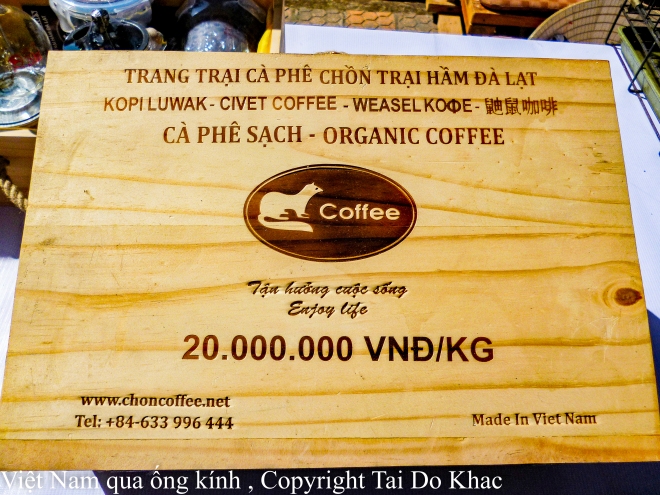
かつて、ベトナムでは同種のジャコウネコによるものが「タヌキコーヒー」(英語ではやはり Weasel coffee)と呼ばれて市場に出ていたが、現在は流通経路に乗る機会が乏しくなり、人為的に豆を発酵させたものが「タヌキコーヒー」と称して販売されている。
Khi đến Hamburg tôi hay đến quán cà phê Burg và Speicherstadt để uống Kopi Luwak và mua đem theo
Kaffeerösterei BURG, Hamburg 2016
Một bình cà phê Kopi Luwak 12,90 €
250 gramm Kopi Luwak 50,5 €
Kaffeerösterei Speicherstadt, Hamburg 2016
Một bình cà phê Kopi Luwak 10,90 €, 250 gramm Kopi Luwak 75 €
Hotel Caravelle , Sai Gon , Viet Nam 2016
cà phê tôi, Hồng Dương
Cô đơn lặng ngồi bên góc quán
Giọt cà phê gõ chán điệu buồn
Thả hồn theo khói thuốc buông
Nhả vòng tròn xoáy theo luồng vấn vương
Nhẹ nhàng chút pha đường đỡ đắng
khuấy đều tay nhịp lặng cô đơn
Nhớ nhung trĩu nặng dỗi hờn
Nhâm nhi từng giọt đắng cơn tình đầu…
Thời gian chảy theo sầu từng giọt
Đen đặc rơi buốt gót chân em
Cợt đùa gieo mãi môi mềm
Nhớ thương tí tách giọt thêm đen ngòm
Đêm rớt xuống tối om chiếc bóng
Gió nhẹ lay gió lộng đêm nay
Cà phê rơi xuống cốc này
Tương tư rót đắng cho đầy niềm đau….
Hotel Sofitel Ha Noi , Viet Nam 2016
La Residence Hue , Viet Nam 2016
Hotel SAIGON BAN ME, Buon Ma Thuot , Viet Nam 2015
Anh giọt cà phê đắng
Em hạt đường chưa tan
Muỗng khua vòng đáy tách
Khuấy tình ta trăm năm.
Anh lang thang cuối phố
Đếm hạt mưa bay qua
Đếm nỗi buồn ở lại
Em mấy lần xót xa ?
Giọt cà phê đắng chát
Chảy trên môi xanh xao
Hạt đường chưa tan hết
Mình đã vội mất nhau.
Bên kia bờ biển lớn
Em ngọt lịm thênh thang
Anh trưa chiều ngồi quán
Uống từng giọt rưng rưng
Hư Vô
Grand Hotel , Sai Gon, Viet Nam 2015
Sao cứ mời em một cốc cà phê đắng?
Những bông hồng tháng chín vẫn còn nguyên
Gió tháng ba bay từ bài thơ cũ
Kỷ niệm nào đã ai nhớ, ai quên.
Người không gặp mà sao mùa cứ nhắc
Gió xưa đâu bay nữa để nuông chiều
Nắng vỡ nợ trên những hàng cây biếc
Bước chân về từ lối rất cô liêu.
Chiều nay bỗng quen cà phê vị đắng
(Chẳng còn ai đây nữa để thêm đường)
Ta bỏ hết những ngọt ngào mời mọc
Gọi riêng mình một cốc đen xuông.
Ca phe MONG CAM , Phan Thiet , Viet Nam 2015
cà phê buồn, Hoàng Nghi
Khói thuốc bay bay với nỗi buồn
Cà phê nhỏ giọt đắng khơi nguồn
Khơi niềm đau ái sầu thiên vạn
Gợi nỗi xót tình khổ triệu muôn
Nhớ đến duyên xưa dòng lệ đổ
Thương về tình cũ giọt châu tuôn
Đêm khuya quán vắng ta thầm lặng
Khúc nhạc ưu tư khẽ nhẹ luồn …
Phan Thiet , Viet Nam 2015
cà phê một mình, Trinhcamle
Đợi người người chẳng thấy sang
Giọt cà phê rớt vội vàng làm chi
Tôi thì từ buổi chia ly
Cà phê vẫn đợi nhâm nhi một mình
Rơi,rơi từng giọt tự tình
Ấm,lạnh cũng chỉ có mình với ta
Biết người ở tận phương xa
Đắng,ngọt có để tình ra tình vào
Hồn tĩnh lặng hay lao xao
Yên mộng đẹp hay trăng sao làm phiền?
Da Lat , Viet Nam 2015
cà phê chiều tháng bảy, Yên Dạ Thảo
Chiều tháng bảy ngoài trời mưa tầm tã
Gió hờn ai rung cây lá ngả nghiêng
Hờn mây say hay hoa nắng ngoài hiên
Đang lả lơi đưa tình cùng gió lạ
Chiều tháng bảy giữa độ mùa tháng hạ
Giọt mưa sa làm ướt má bờ môi
Lệ từ trời hòa dòng lệ ta rơi
Buồn cảm thương nỗi lòng người thi nữ
Chiều tháng bảy nơi phương trời viễn xứ
Có mối tình tựa Chức Nữ, Ngưu Lang
Người xa xôi nơi nắng ấm miền Nam
Người phương Bắc đông sang nhiều tuyết trắng
Chiều tháng bảy chợt lòng buồn xa vắng
Cà phê thơm pha nóng định chia đôi
Muốn mời ai nhưng người tận phương trời
Ta cô quạnh uống cà phê giọt đắng!
Ca phe Me Linh , Bao Loc , Viet Nam 2015
Làng cà phê Trung Nguyên, Buôn Ma Thuột Viet Nam 2015
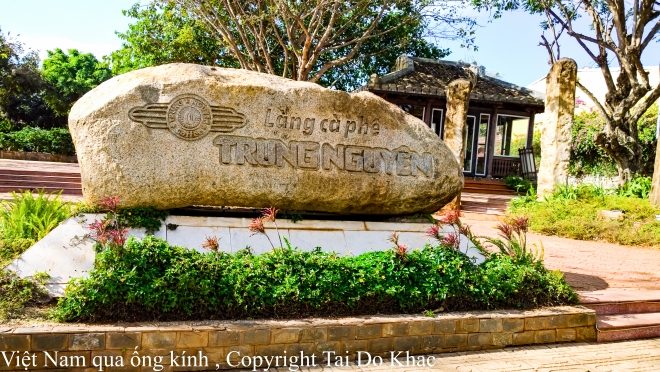
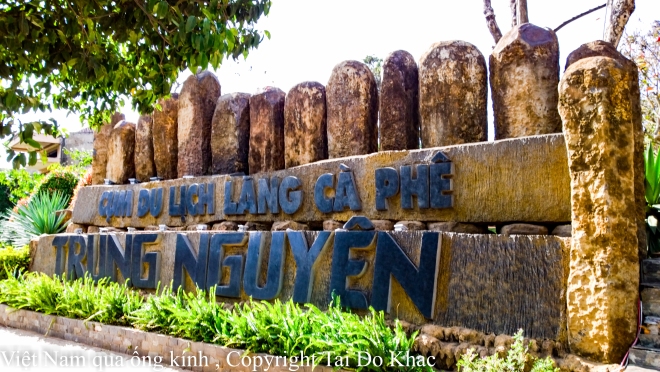

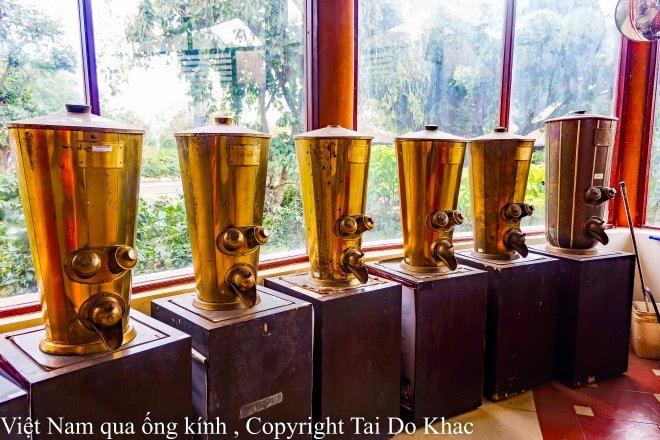
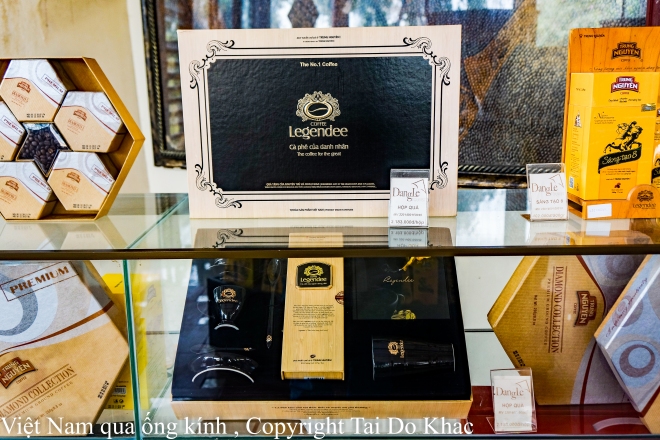

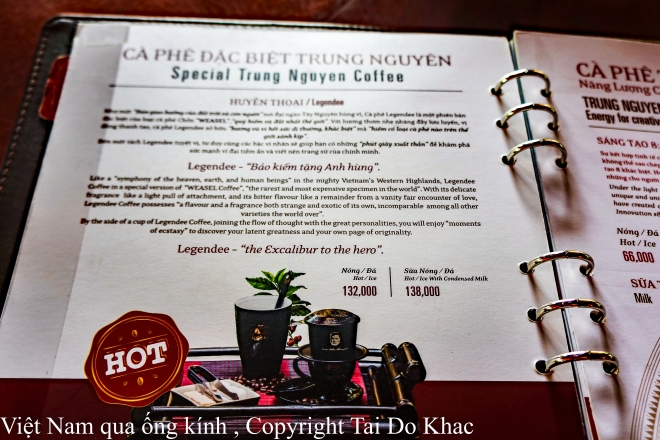
“ Bảo Kiếm Tặng Anh Hùng “ – Legendee “ the Excalibur to the hero „
Từ nơi Đại ngàn Tây Nguyên hùng vĩ – “Vùng đất đỏ bazan huyền thoại, có lịch sử hình thành hơn 160 triệu năm trước”, câu chuyện Cà phê Chồn bắt đầu với loài Chồn hương hoang dã, sống trong những cánh rừng cà phê bạt ngàn, sau khi ăn những trái cà phê chín mọng đã cho ra đời loại cà phê nguyên liệu độc nhất để tạo nên Cà Phê Chồn WEASEL «vô cùng quý hiếm và đắt nhất thế giới » đến từ Trung Nguyên, với sản lượng chỉ khoảng 40 – 50 kg mỗi năm.
Như một “bản giao hưởng của đất trời và con người” nơi đại ngàn Tây Nguyên hùng vĩ, Cà phê Legendee là phiên bản đặc biệt của loại cà phê Chồn “WEASEL” “quý hiếm và đắt nhất thế giới”. Với hương thơm dịu như chiếc níu nhẹ nhàng lưu luyến, vị đắng thanh tao như khúc dư tình chợ phiên, cà phê Legendee sở hữu “hương và vị hết sức dị thường, khác biệt” mà “hiếm có loại cà phê nào trên thế giới sánh kịp”.
«Tuyệt Phẩm Cà Phê Legendee» dâng lên người yêu cà phê “hương vị diệu kỳ đặc sắc”; giúp khơi gợi nguồn cảm hứng bất tận, những phút giây sáng tạo xuất thần, sự tỉnh thức cao độ để tạo nên những bước ngoặt lịch sử cho chính mình và xã hội.

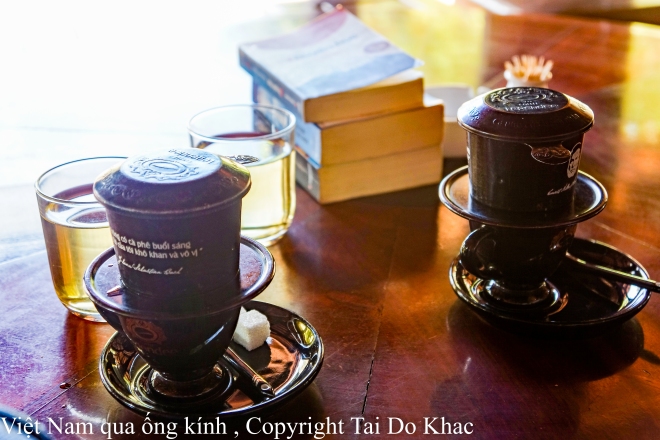
Cà Phê Tùng, Ðà Lạt Viet Nam 2015
Với hơn gần nửa thế kỷ nơi đây là nơi gặp gởi của những người yêu cà phê và nhạc pháp . Tại nơi nầy củng là nơi Trịnh công Sơn gặp Nguyễn thị Lệ Mai . Vị Ý , Đinh Cường , Cù Nguyễn , Từ Công Phụng , Bùi Giáng , ngày xưa là những khách quen thuộc của Tùng . Ngày xưa ngồi nghe tous les garcons , ton meilleur ami , la plus belle pour aller danser , besame mucho vào những buổi chiều mưa rơi . Qua lớp kính ta có thể thấy cảnh sinh khu Hoà Bình hay ngắm các nữ sinh áo len Bùi Thị Xuân vào những giờ tan trường . Vào những đêm sương lạnh nhìn xuống đường trong cái giá lạnh về đêm của thành phố sương mù.
Không gian của Tùng được ngăn cách với thế giới bên ngoài bằng lớp kính. Ngồi trong Tùng ta có thể thấy cảnh sinh hoạt, người qua lại trên khu Hòa Bình hay ngắm các cô nữ sinh áo len xanh Bùi Thị Xuân vào những giờ tan trường.
Vào những đêm sương lạnh xuống nhiều, Tùng là cái lò sưởi ấm nhưng đối với tôi, sẽ thú vị hơn khi ngồi trên balcon (chỉ có một bàn duy nhất) để nhìn xuống đường trong cái giá lạnh về đêm của thành phố sương mù. Cảnh củ nhưng nguời xưa không còn nửa, ông bà Tùng nay đả ra người thiên cổ , người con trai Thông tiếp nối đảm đương quán cà phê.

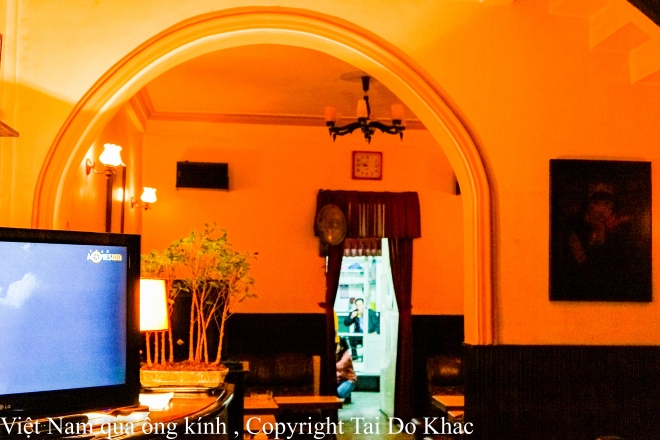
It’s time for a rest. I will return to city and go to a famous café. When talking about Dalat coffee shop, Tung café is always on top of the list. As I know, Tung is the oldest Café of Dalat, built in the early 50s. It’s not well-known for the coffee’s taste or the luxury interiors but it is the witness of Dalat’s history. No matter time goes by, or no one can remember exactly how long has the Café Tung been built, but for one thing, I am sure that Tung Café will bring you the nostalgia of the old time.
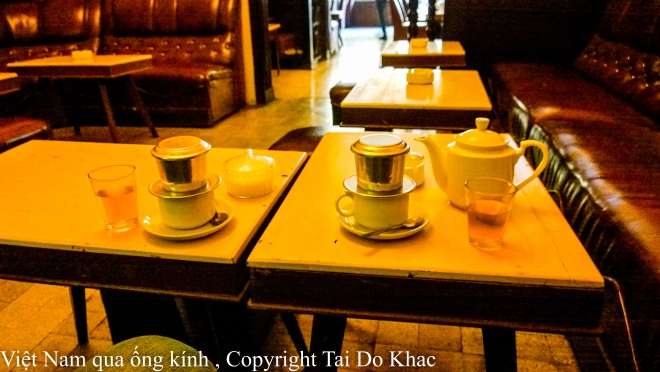
Ca phe Nights , Da Lat Viet Nam 2014

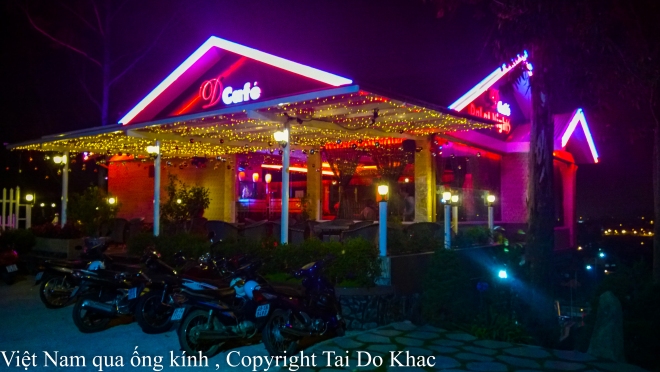

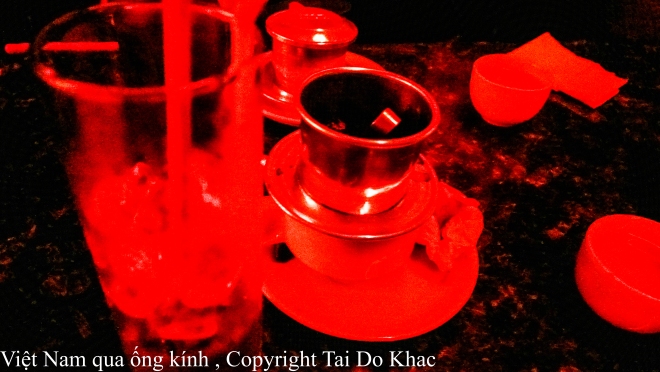
Ca phe Long Trieu , Da Lat Viet Nam 2014
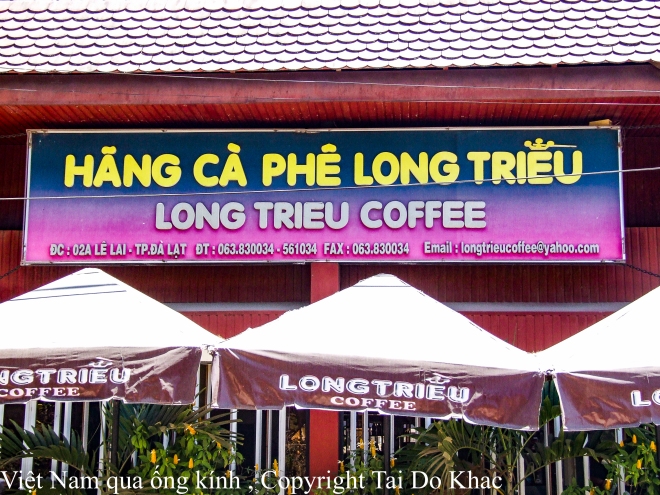
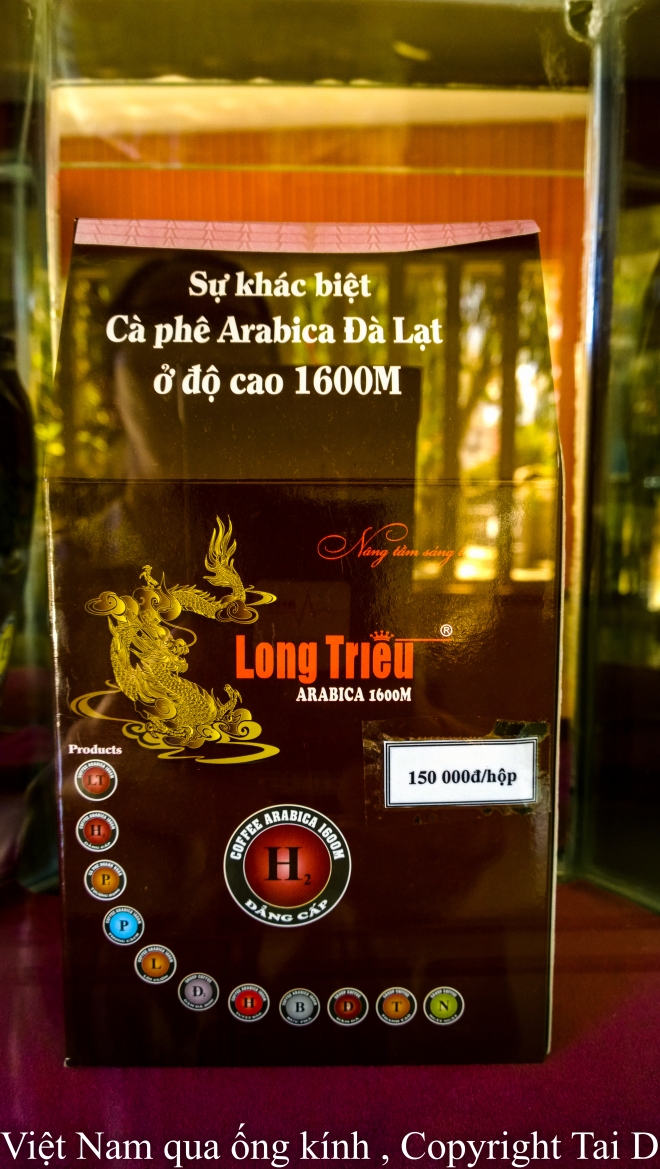

Ca phe ZEN , Da Lat Viet Nam 2014
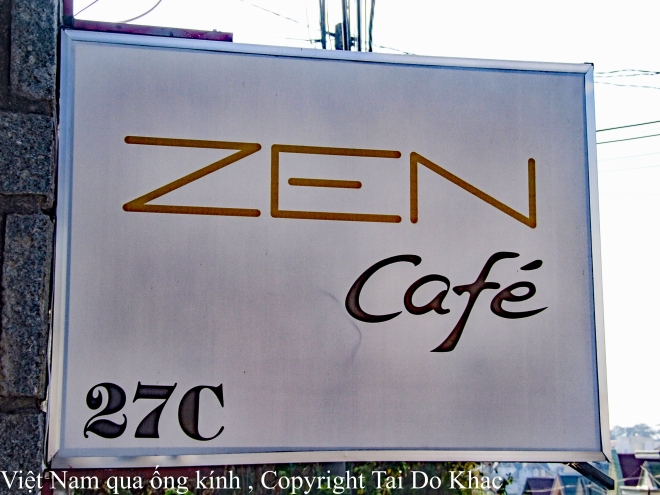

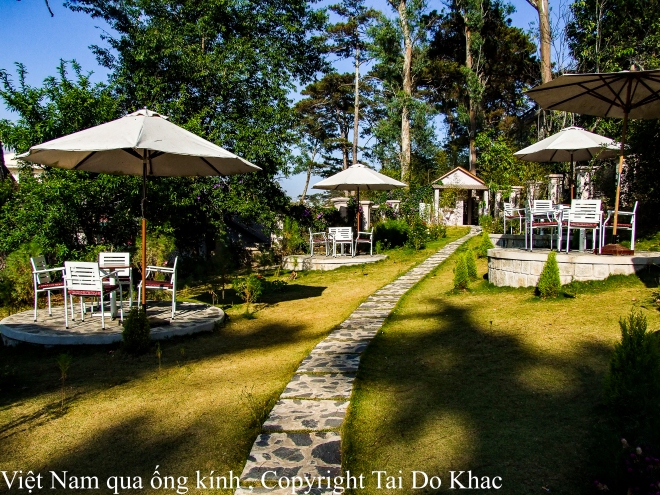
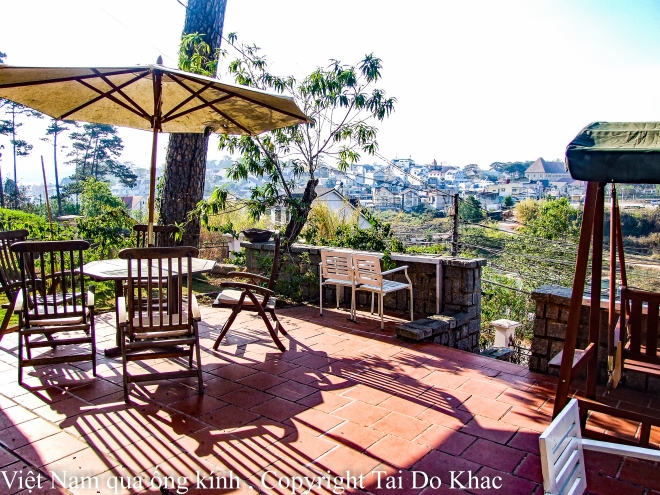
Đố ai định nghĩa được cà phê
Có nghĩa gì đâu một buổi chiều
Nó chiếm hồn ta bằng nắng nhạt
Bằng mây nhè nhẹ, gió hiu hiu.
Cà Phê Chồn Trại Hầm – Đà Lạt, Viet Nam 2014
Kopi Luwak aus Indonesia
Coffee© , December 2016 . Copyright Tai Do Khac , Version 3.0
________________________________________________________________
Note
Trường Bùi Thị Xuân được thành lập năm 1952. Lúc đầu, trường có tên Phương Mai – con gái vua Bảo Đại. Ngày đầu thành lập, trường chỉ có một lớp đệ thất (lớp 6) và còn mượn tạm địa điểm tại trường Đoàn Thị Ðiểm. Năm 1954, trường mới được chuyển về địa điểm hiện nay. Lúc ấy trường chỉ có một dãy nhà A gồm 10 lớp, trường có thêm 2 lớp đệ ngũ (lớp 8), đệ tư (lớp 9). Năm 1955, trường được đổi tên là trường Quang Trung. Năm 1957, trường mang tên đô đốc Bùi Thị Xuân – vợ tướng Trần Quang Diệu của triều Tây Sơn – Nguyễn Huệ.[1]
Tùng coffee shop in central Da Lat city.This is the old coffee house with the long history .They serves one of the best homemade yogurt here.[1]
Vietnamese iced coffee, also known as Ca phe da or cafe da (Vietnamese: cà phê đá, literally „ice coffee“) is a traditional Vietnamese coffee recipe.
At its simplest, Ca phe da is made with coarsely ground Vietnamese-grown dark roast coffee individually brewed with a small metal French drip filter (cà phê phin) into a cup containing about a quarter to a half as much sweetened condensed milk, stirred and poured over ice. The coarse grind allows the use of the cà phê phin. Ca phe sua da is iced coffee with sweetened condensed milk.[1]
Literatur:
[1] Wikipedia
[2] Weinberg & Bealer 2001, pp. 3–4
[3] Wild, Antony (2004-03-25). Coffee: A dark history. pp. 217–229. ISBN 9781841156491.
[4] Marcone, Massimo (2007), In Bad Taste: The Adventures And Science Behind Food Delicacies
[5] National Geographic Travelers Indonesia, November 2010, page 44
